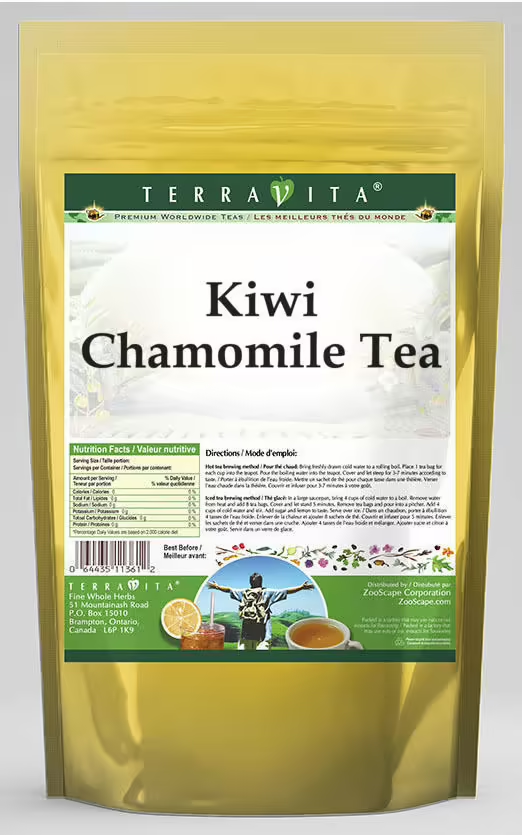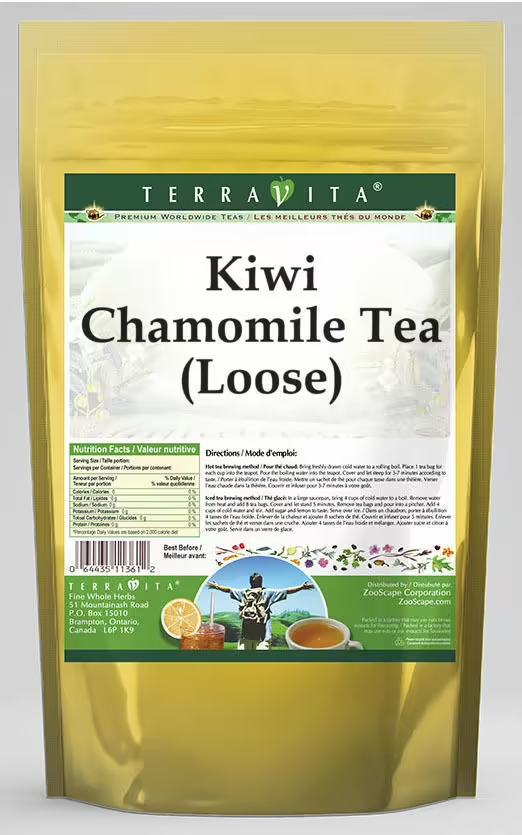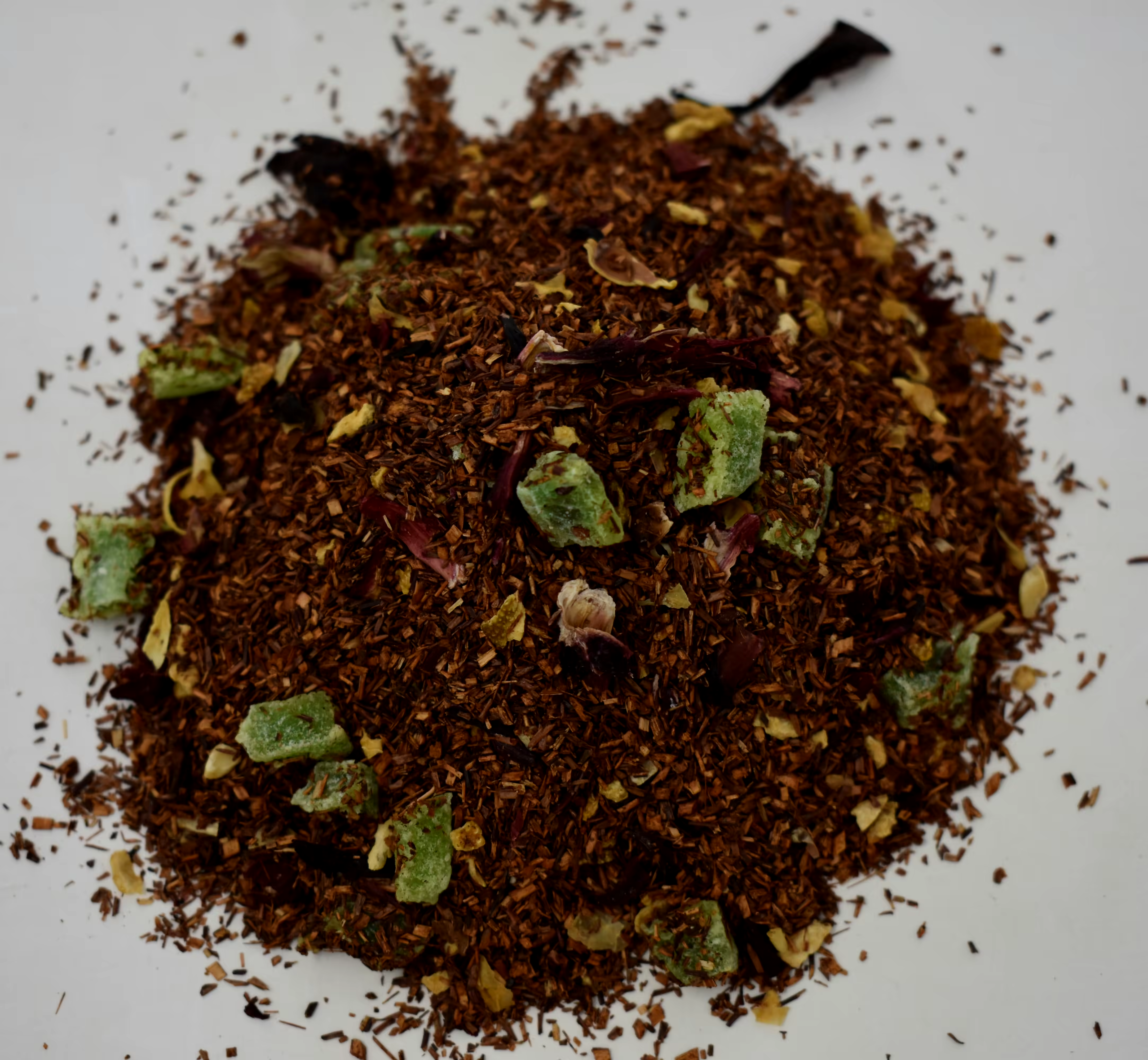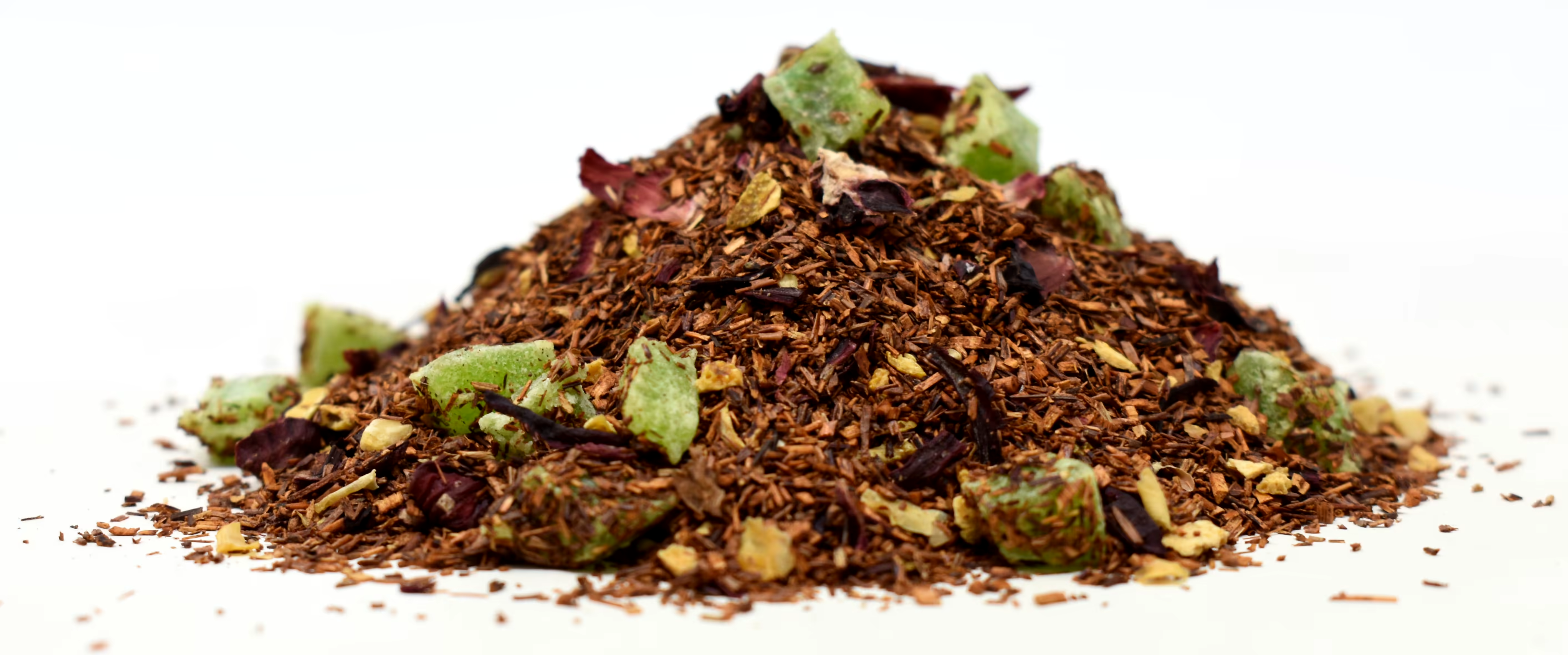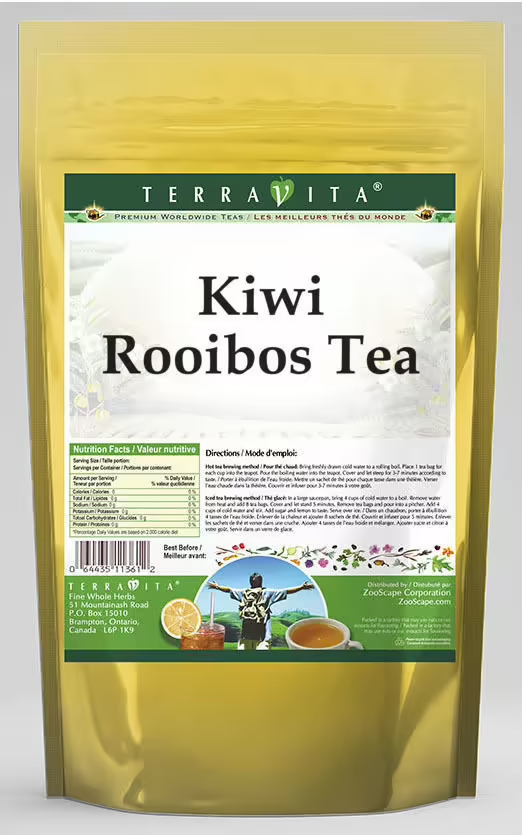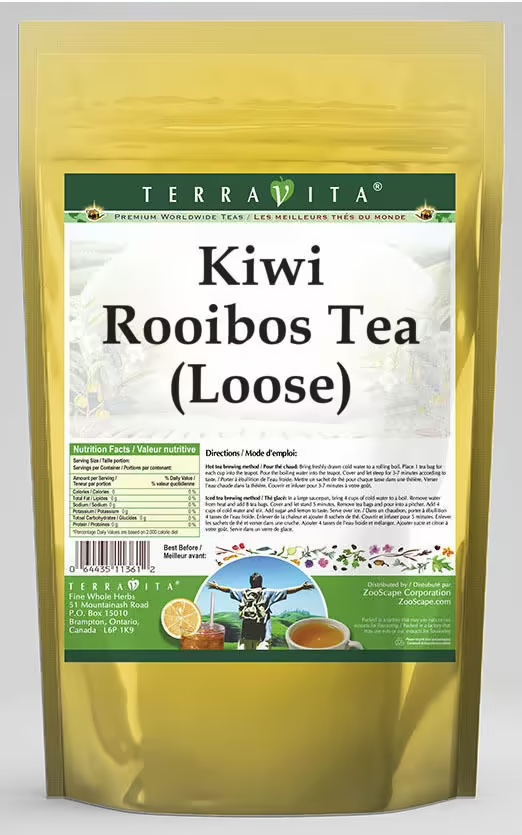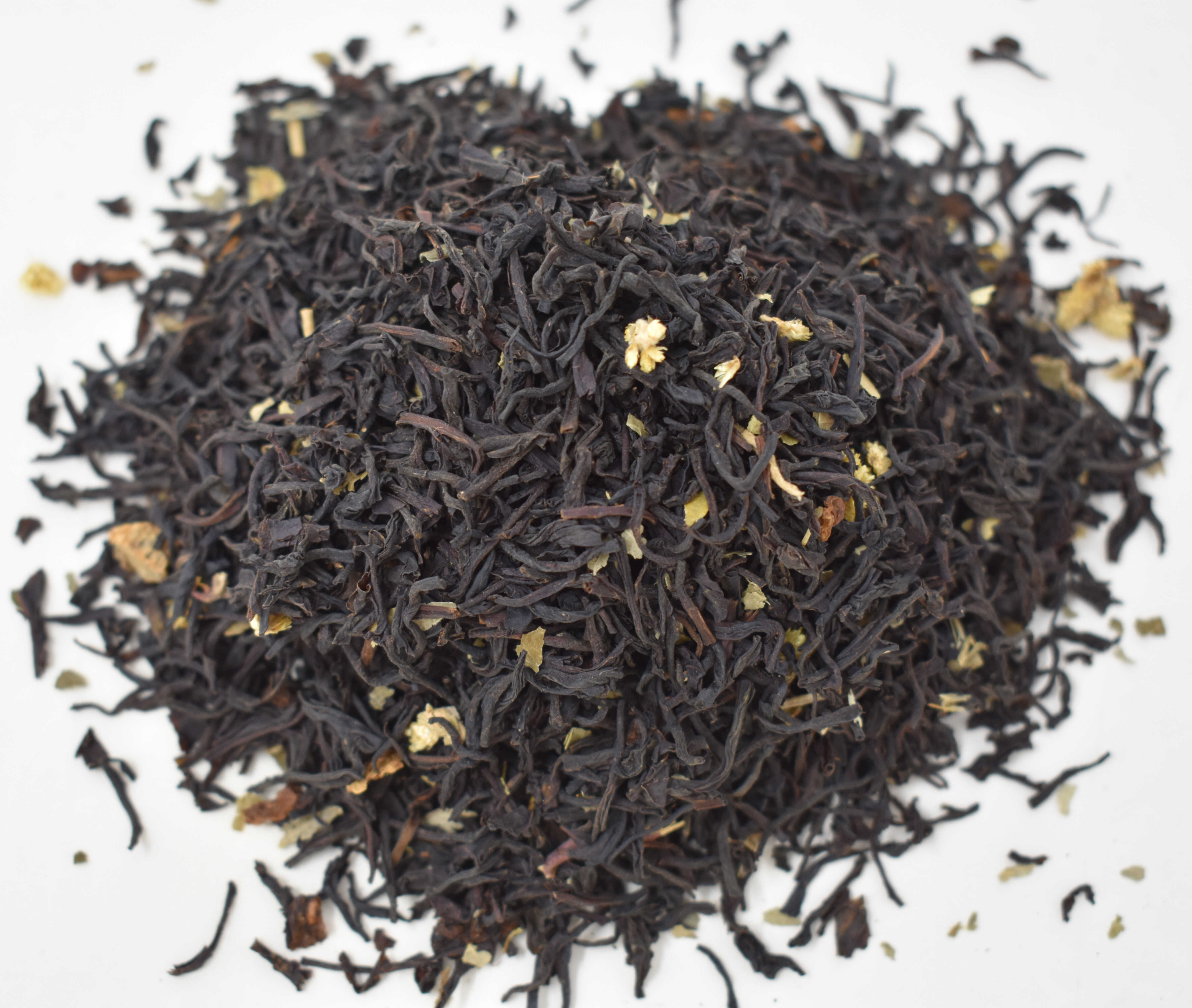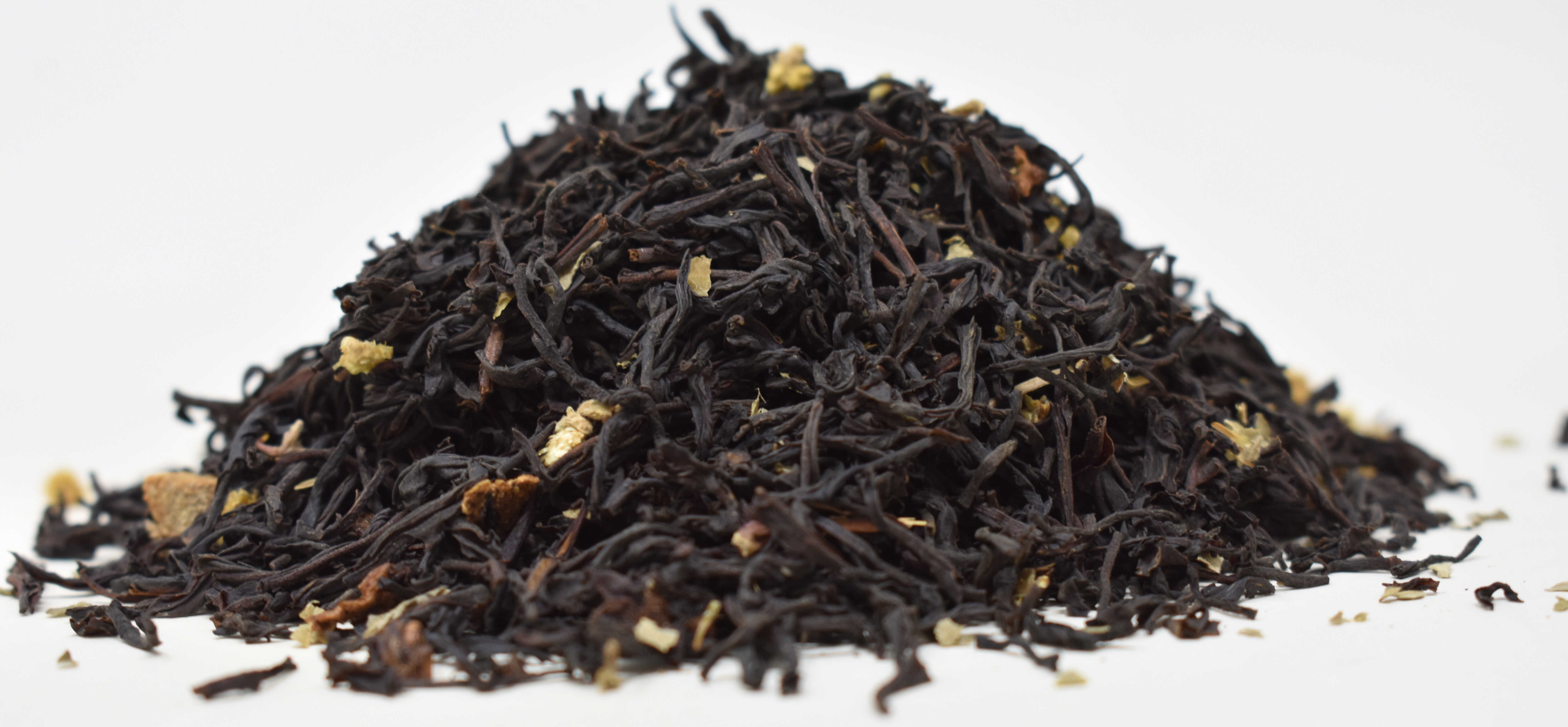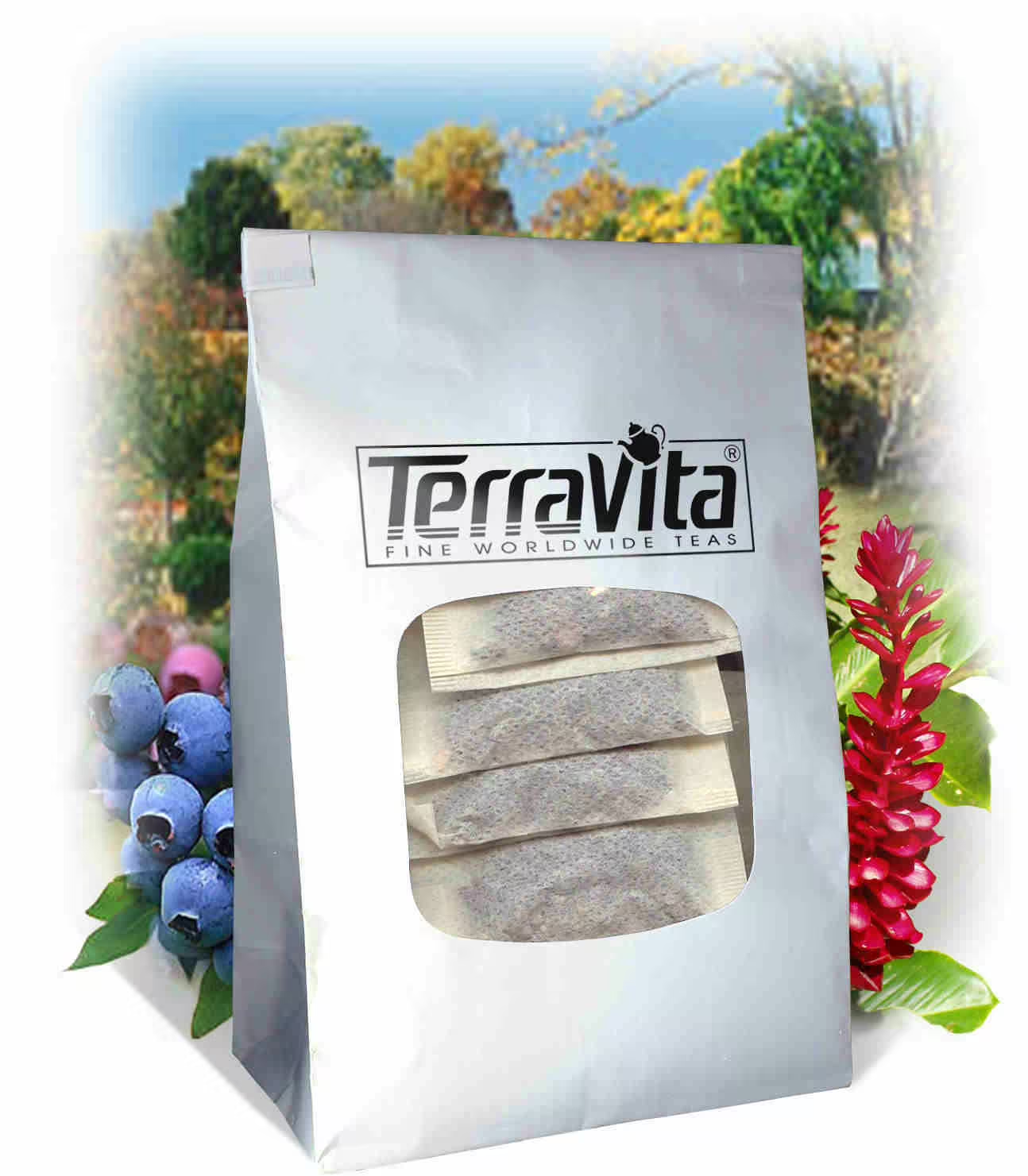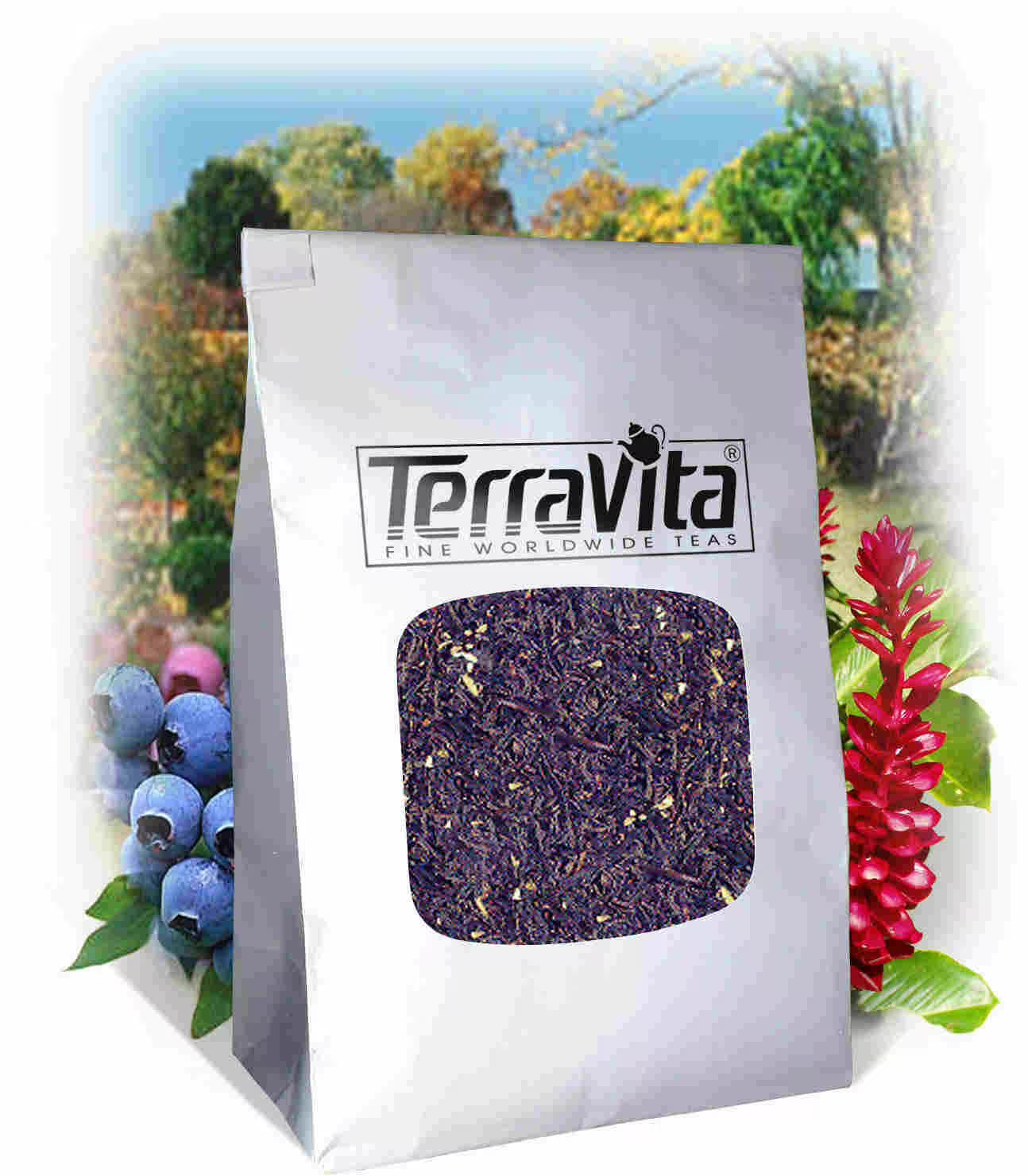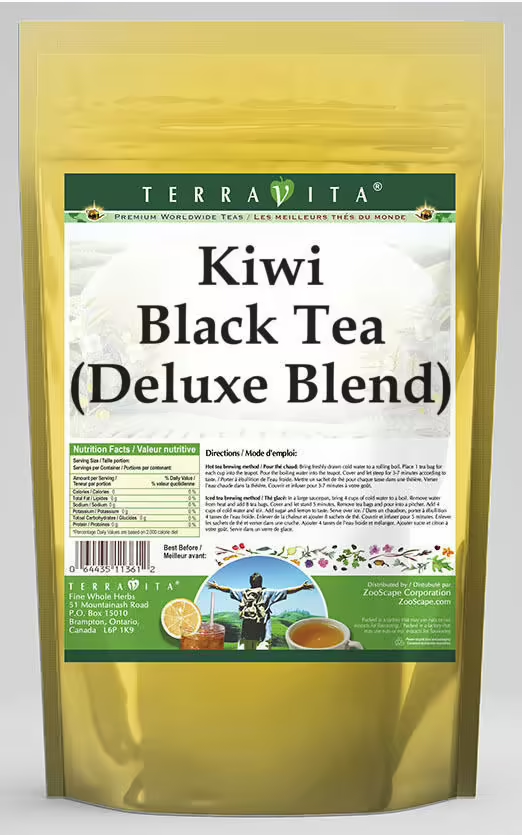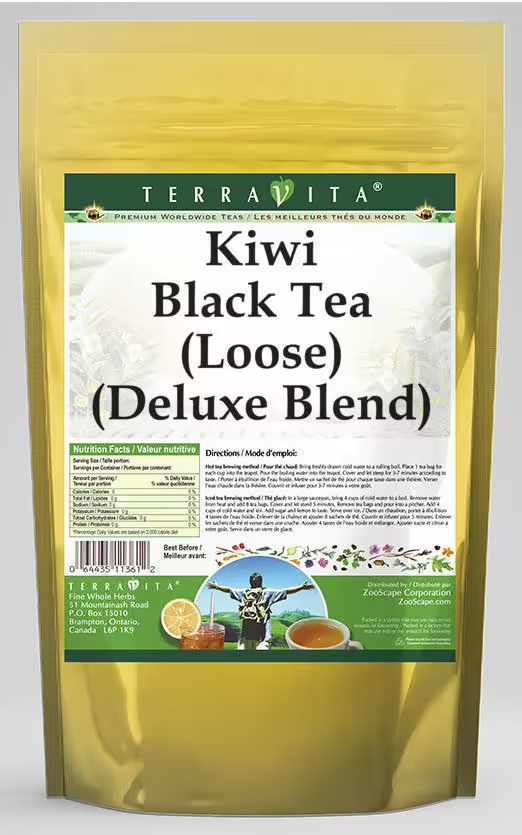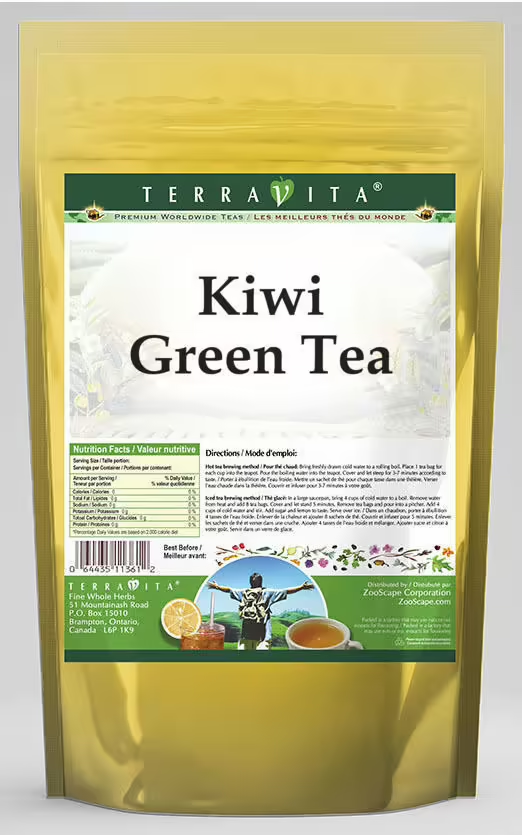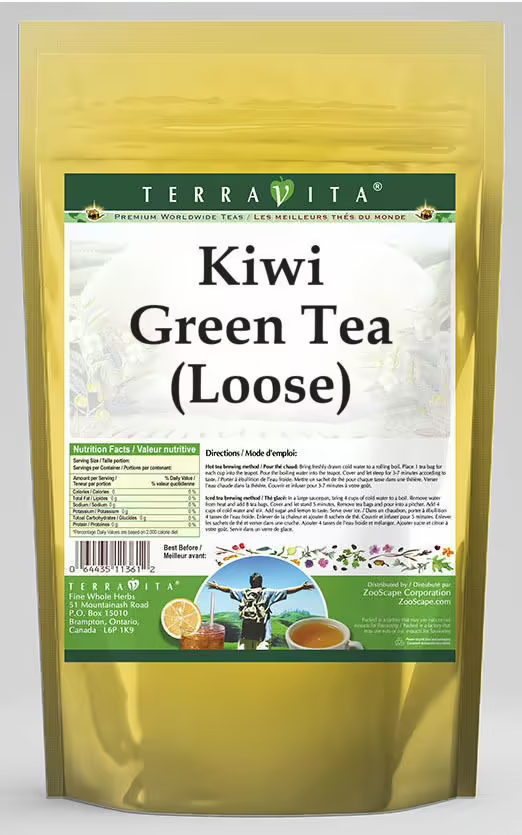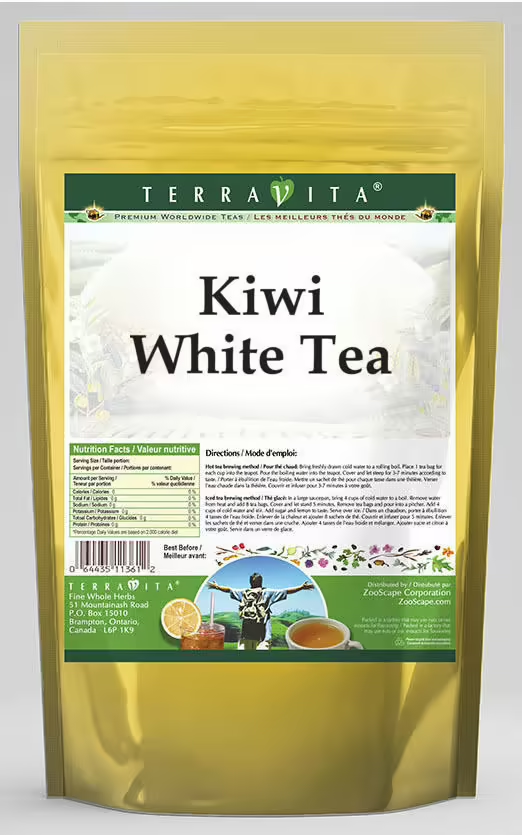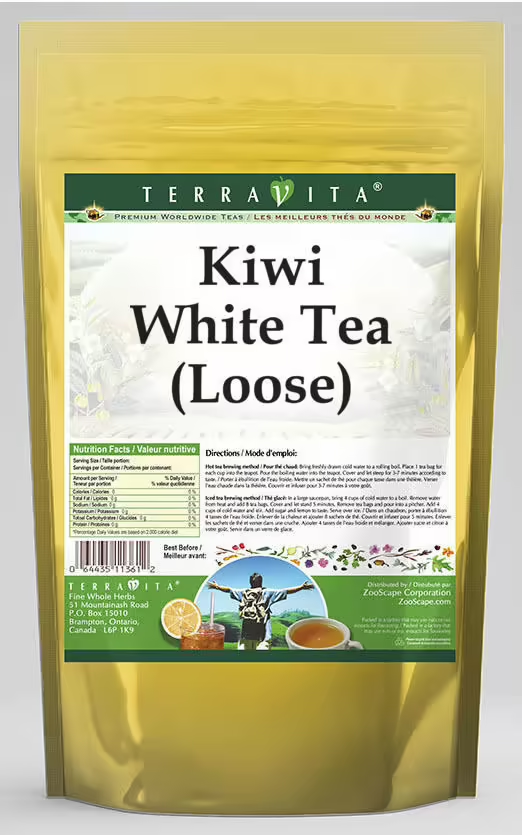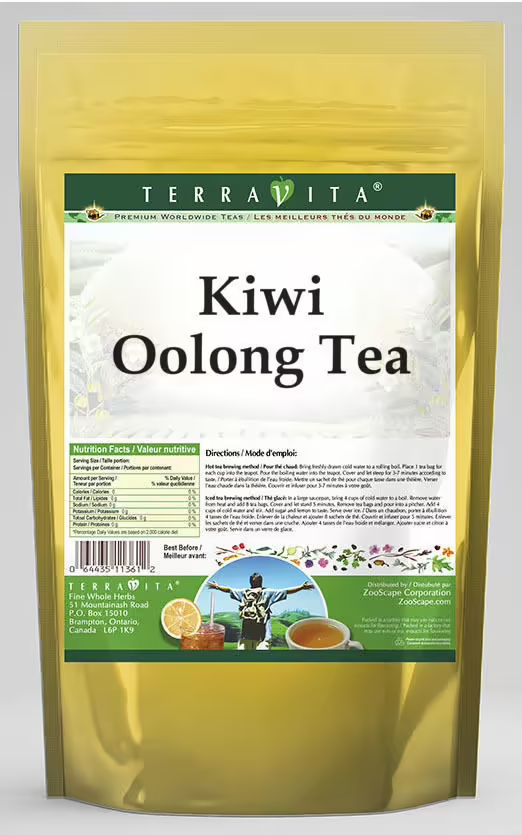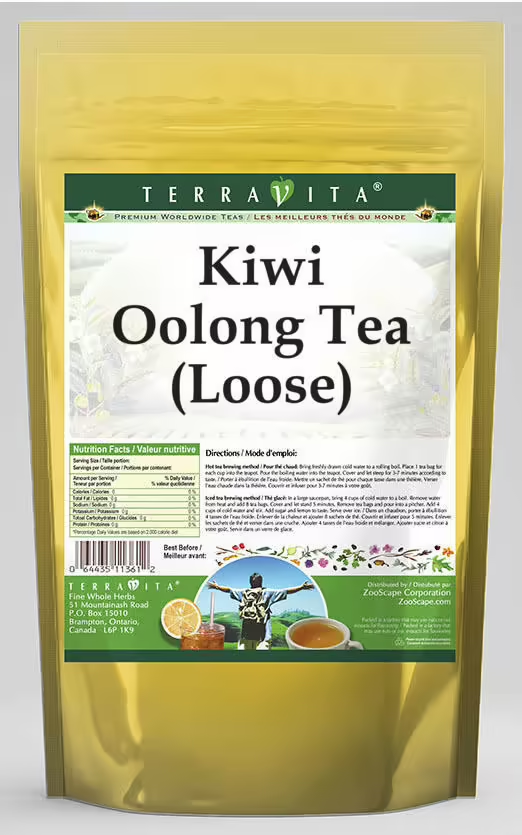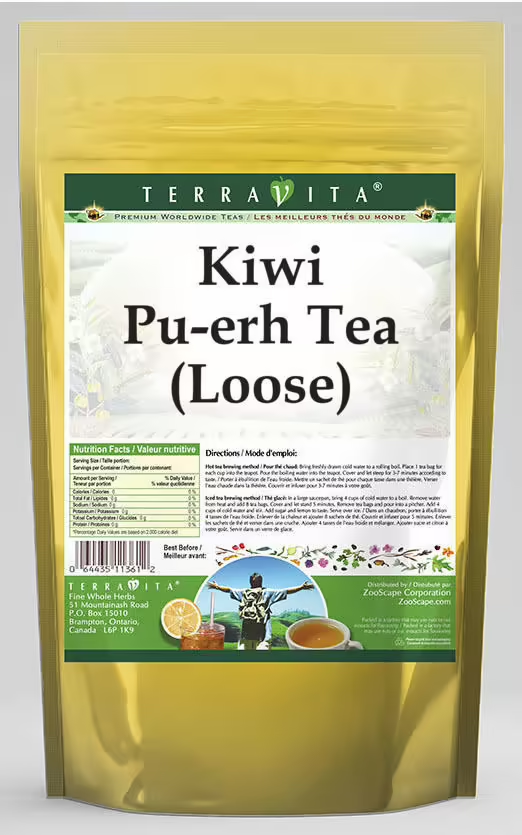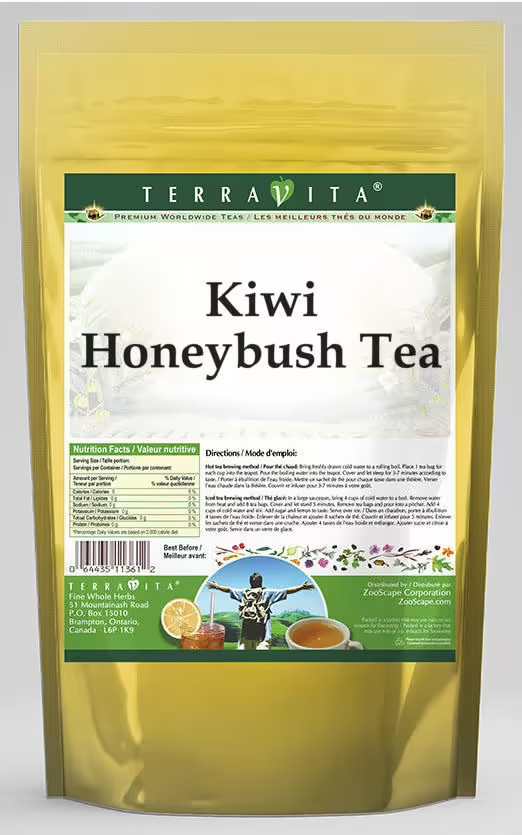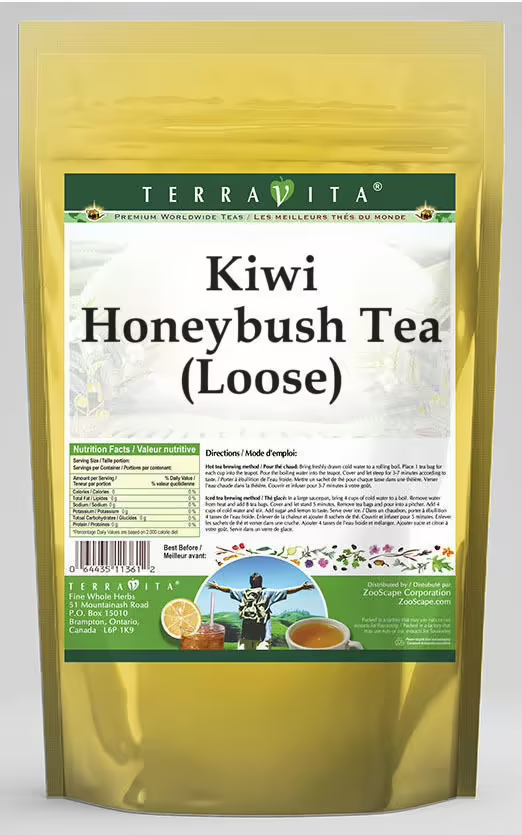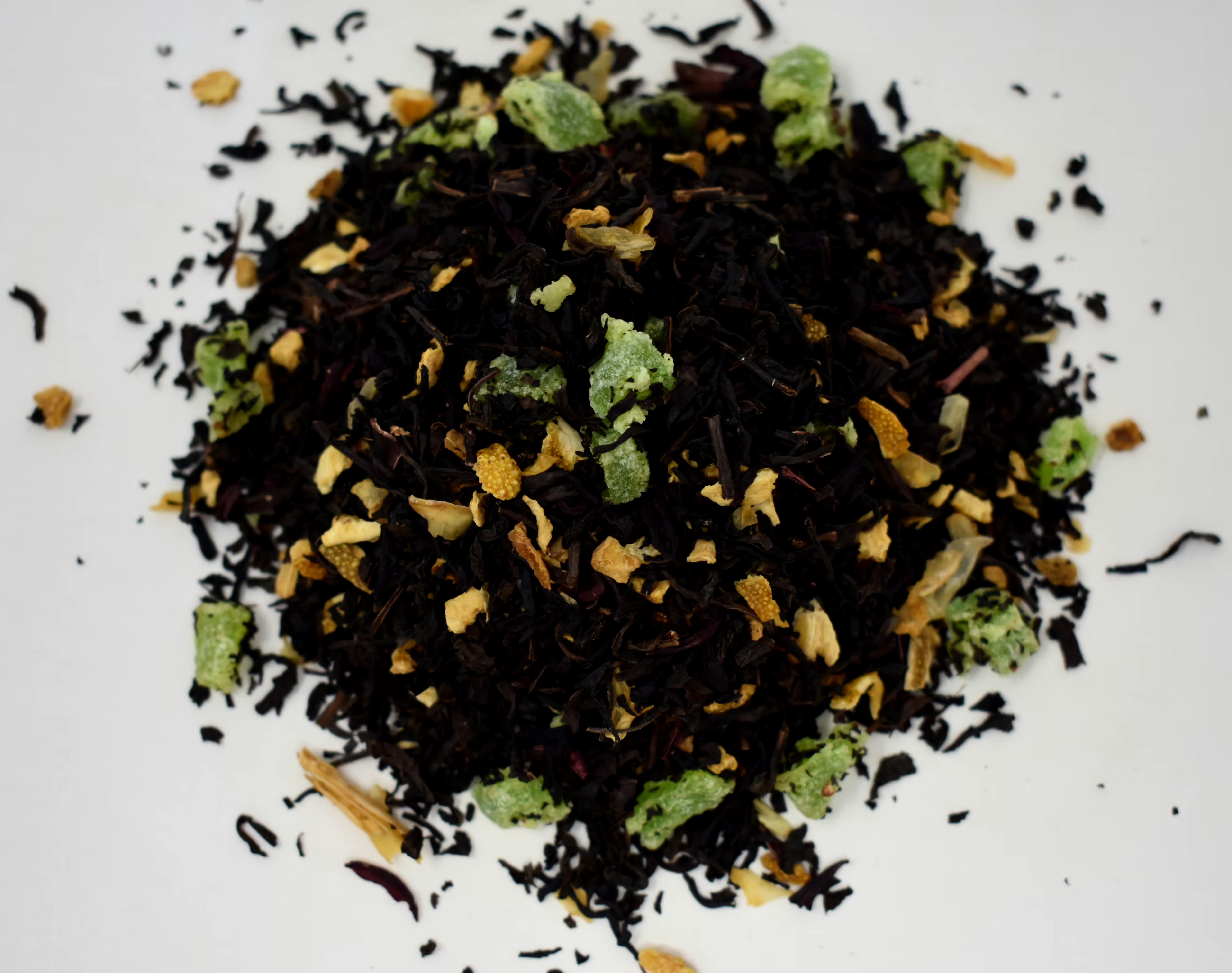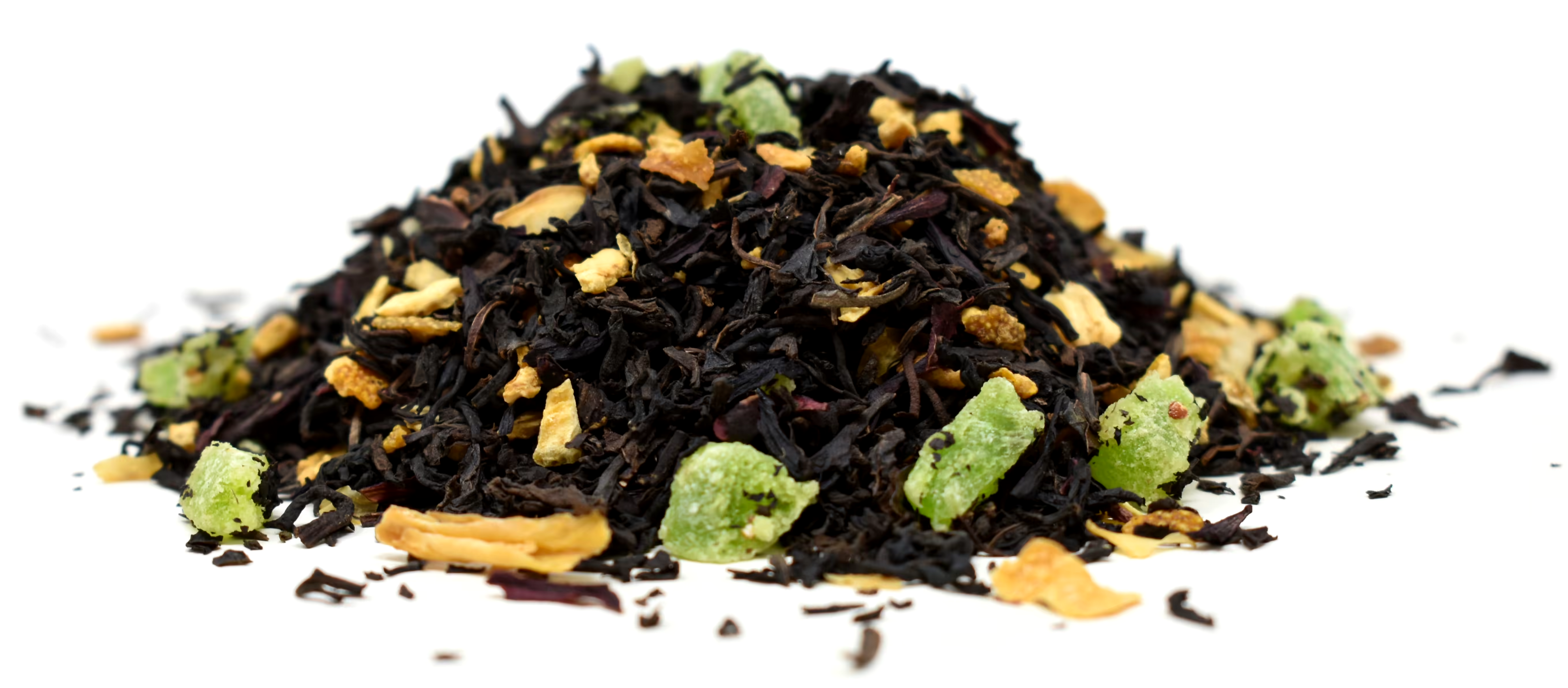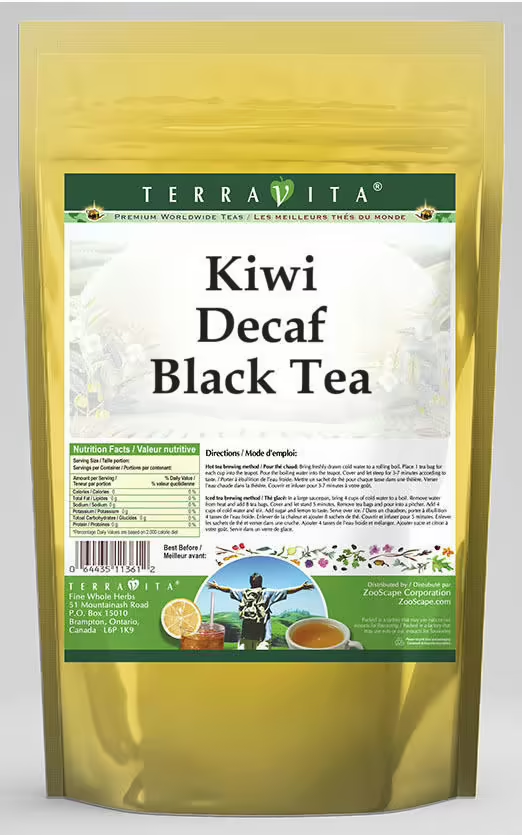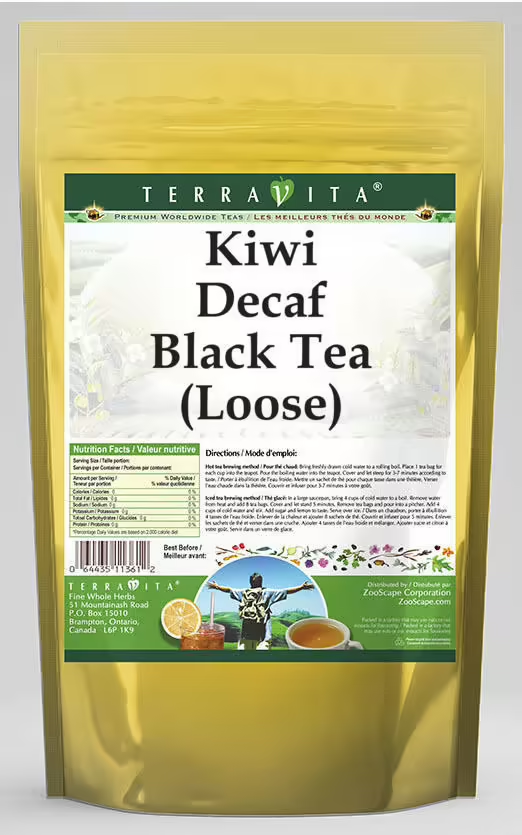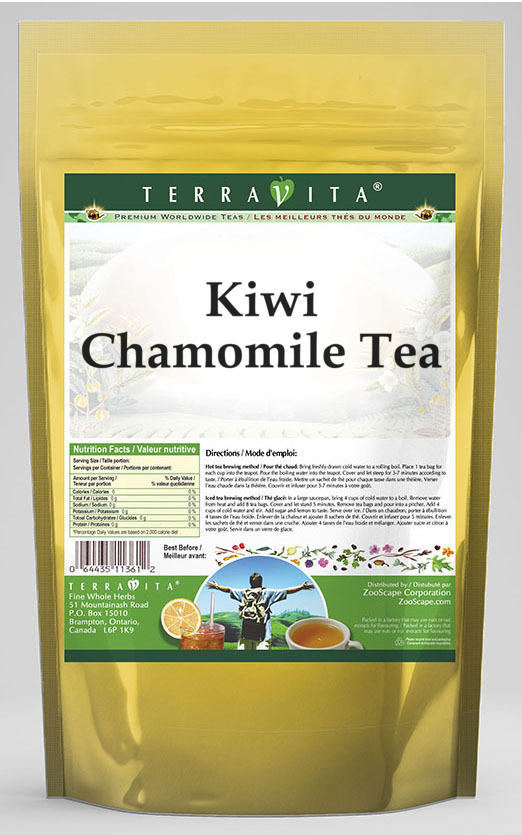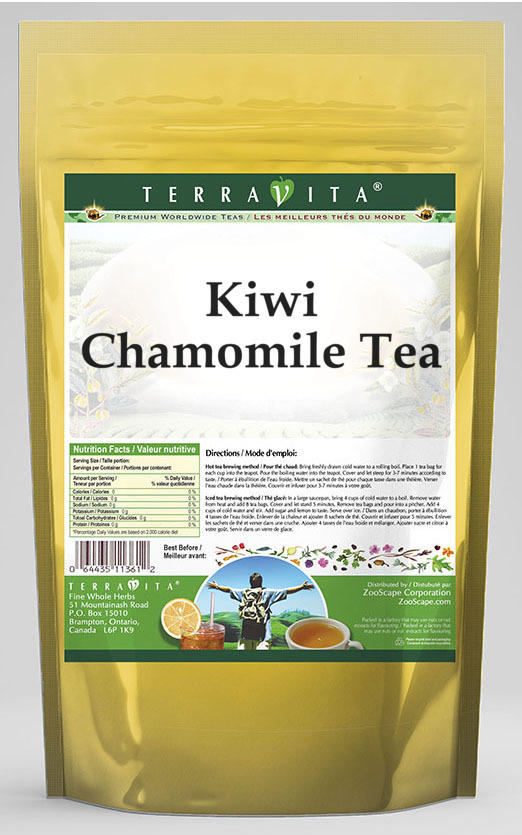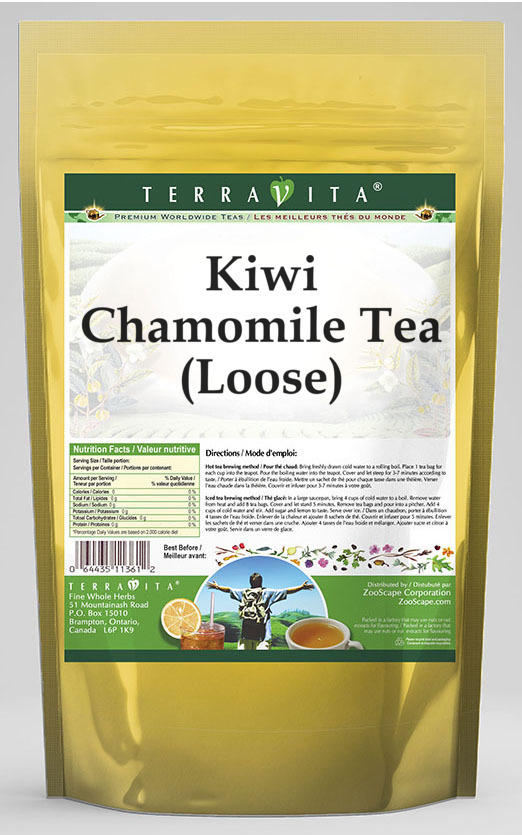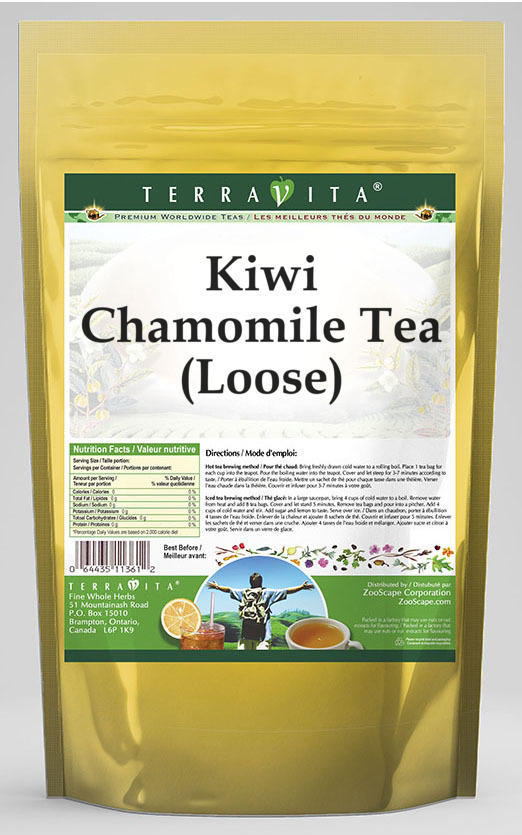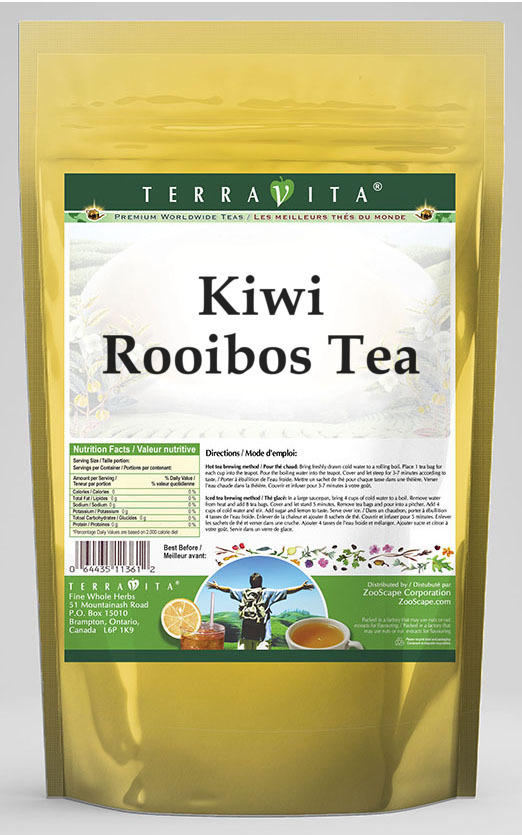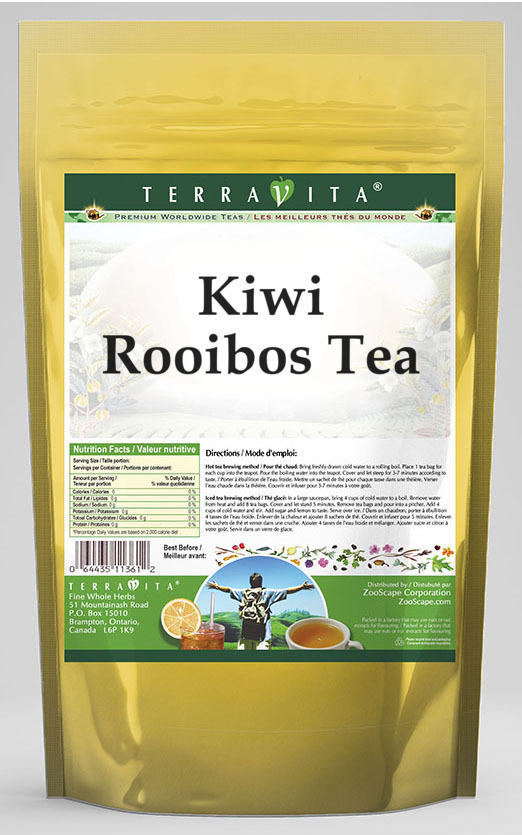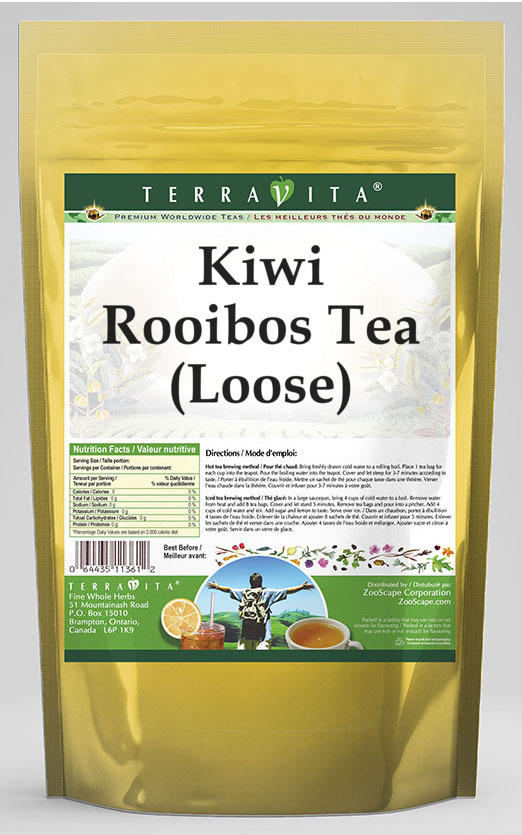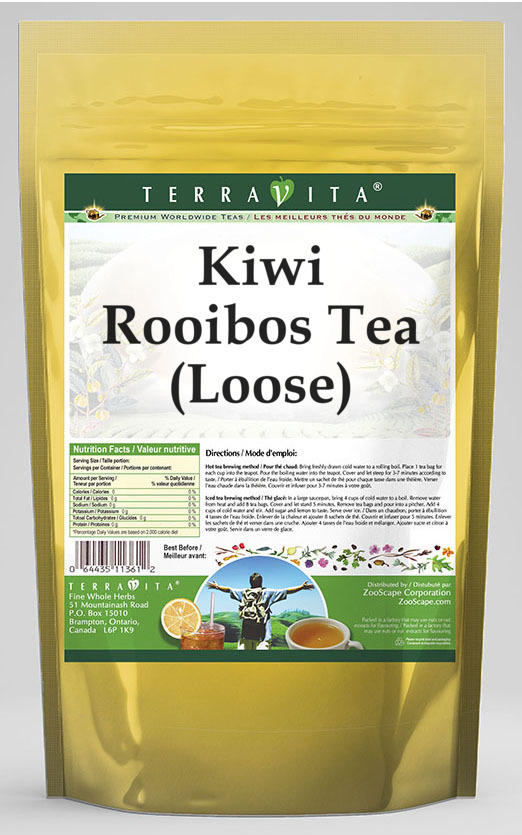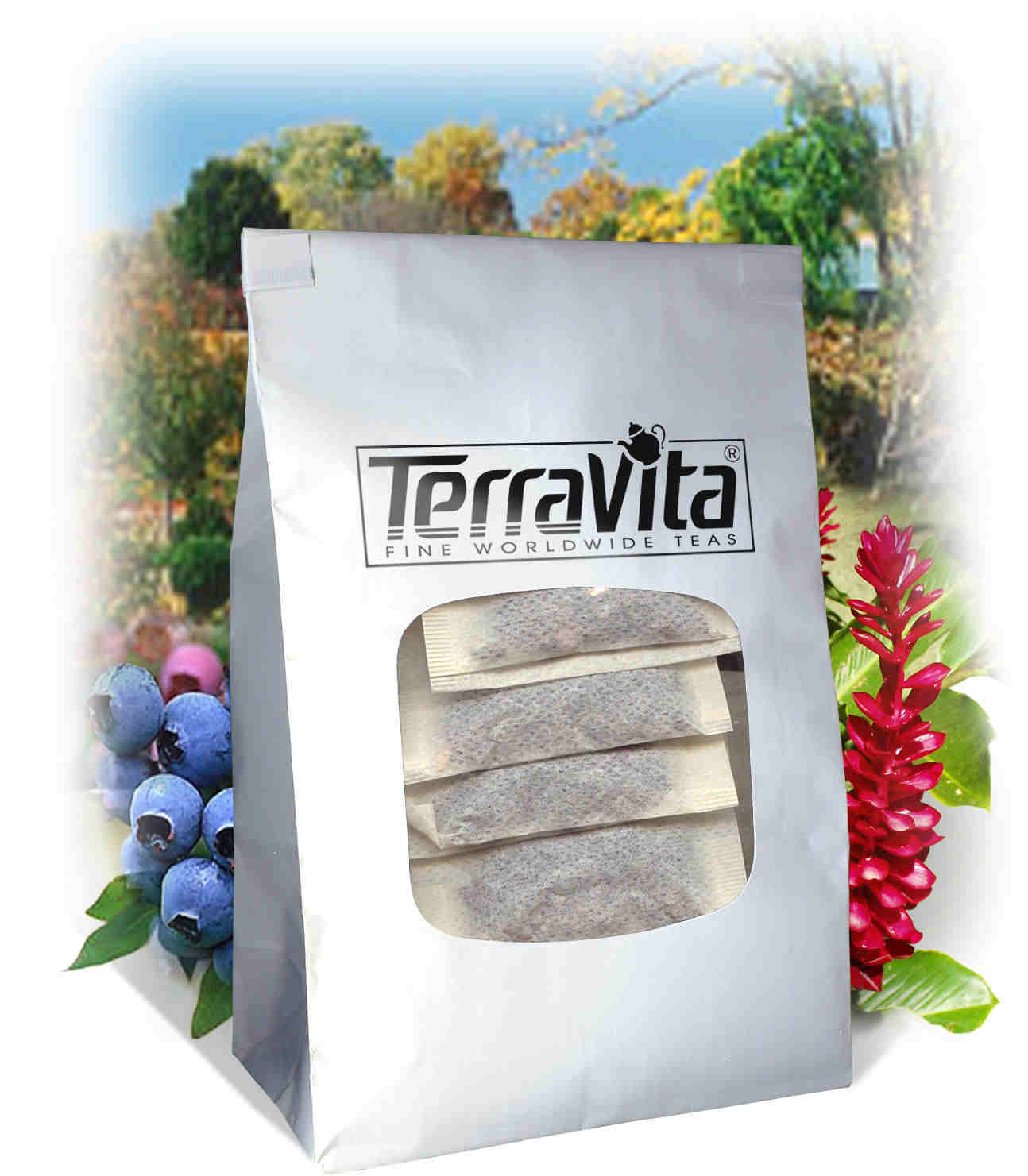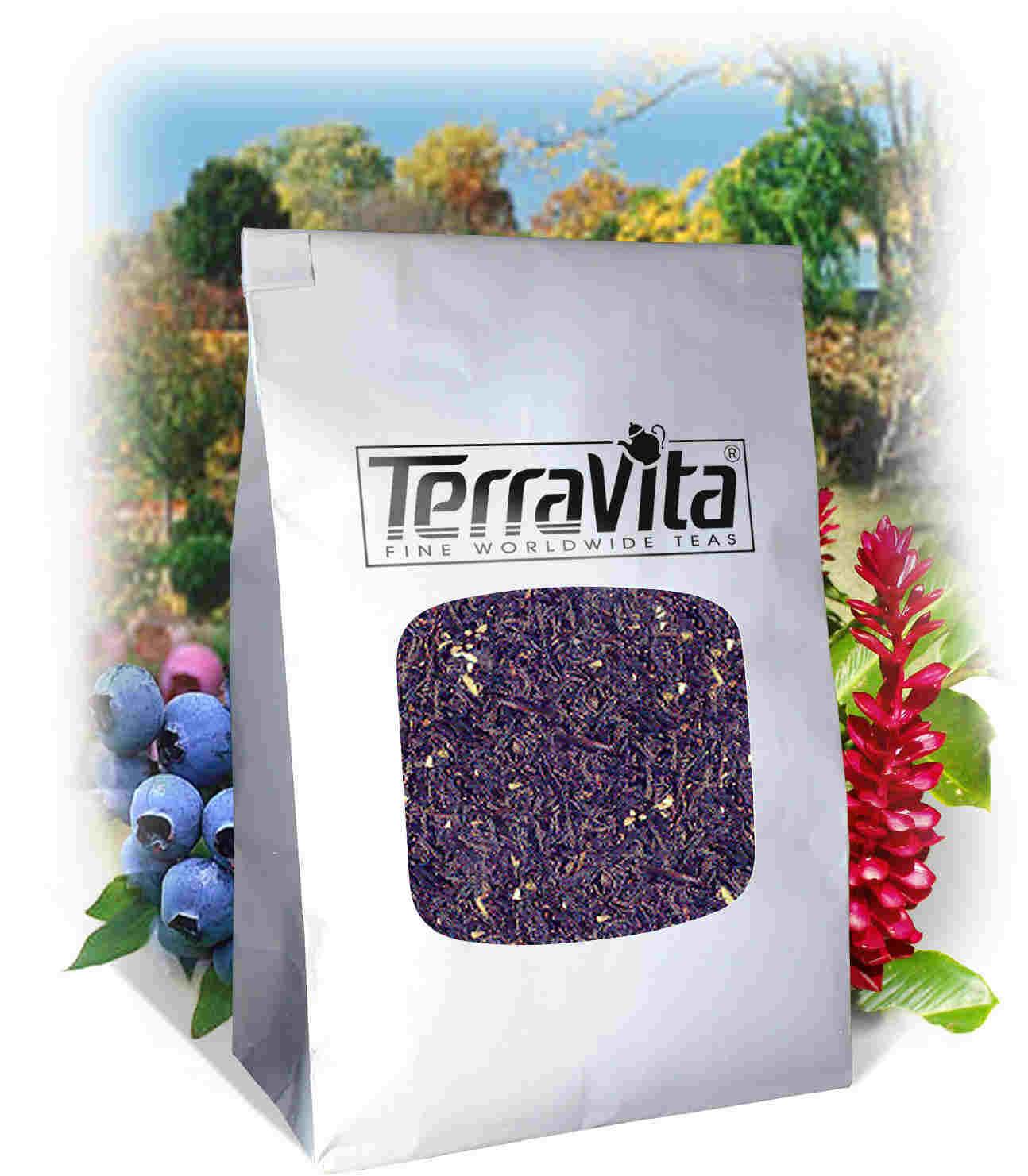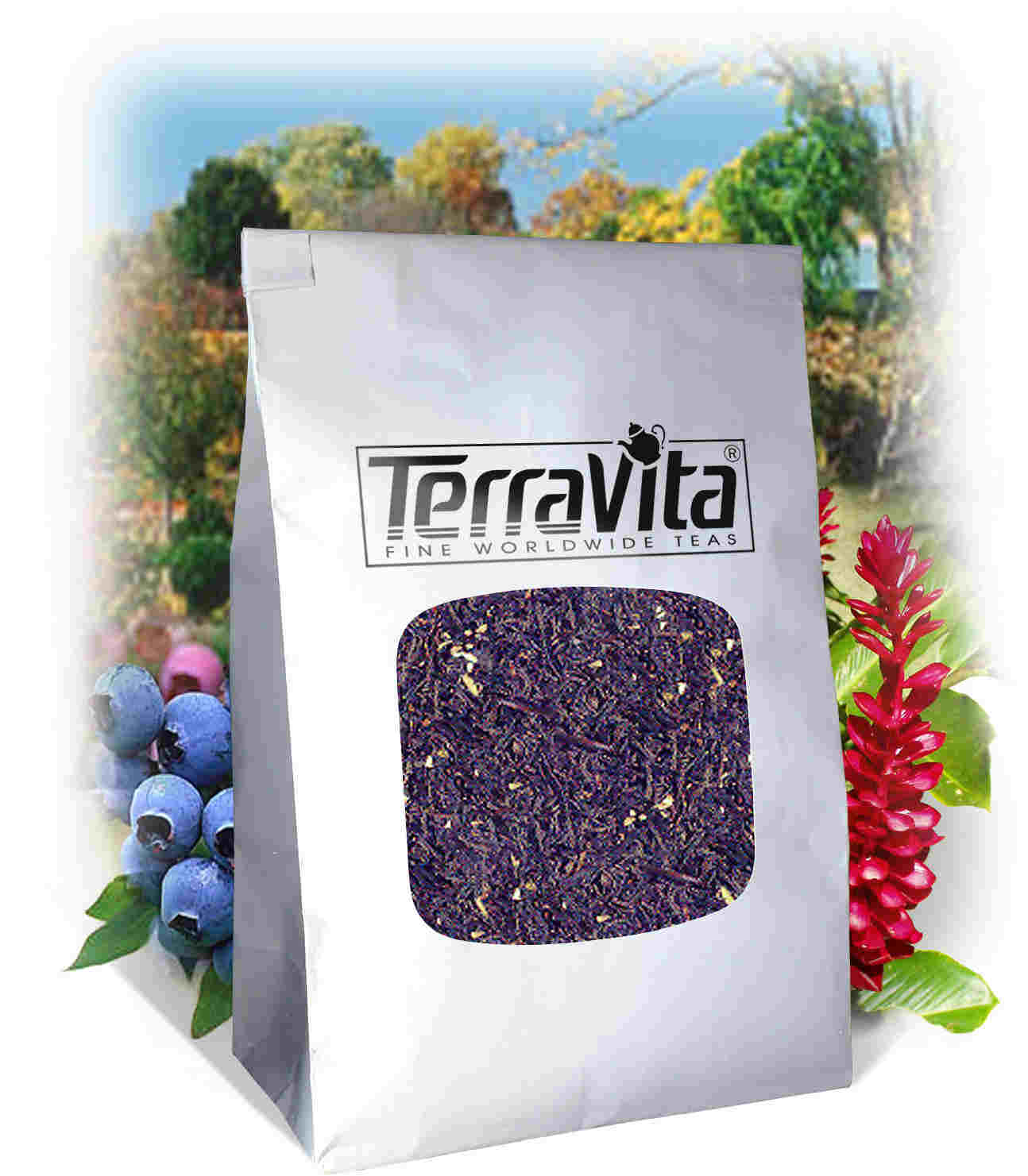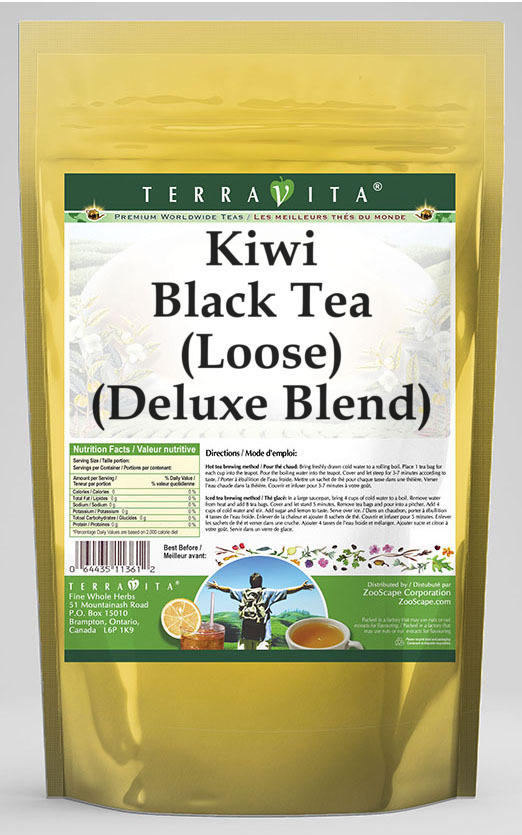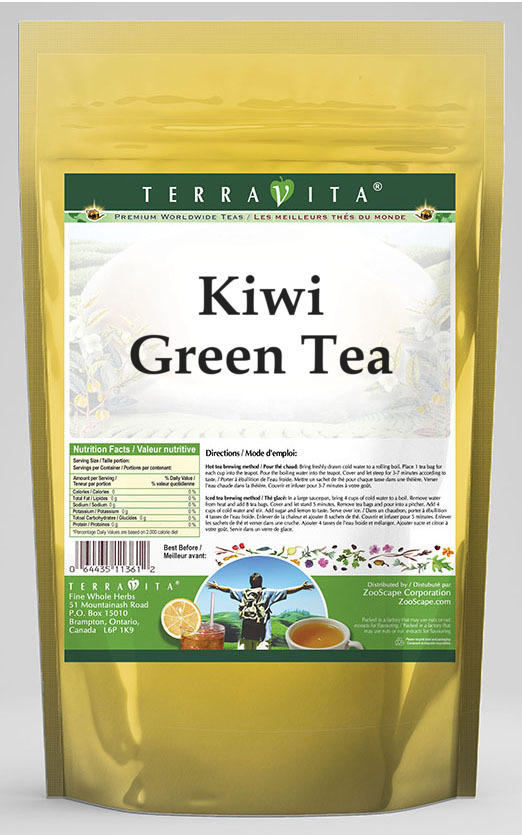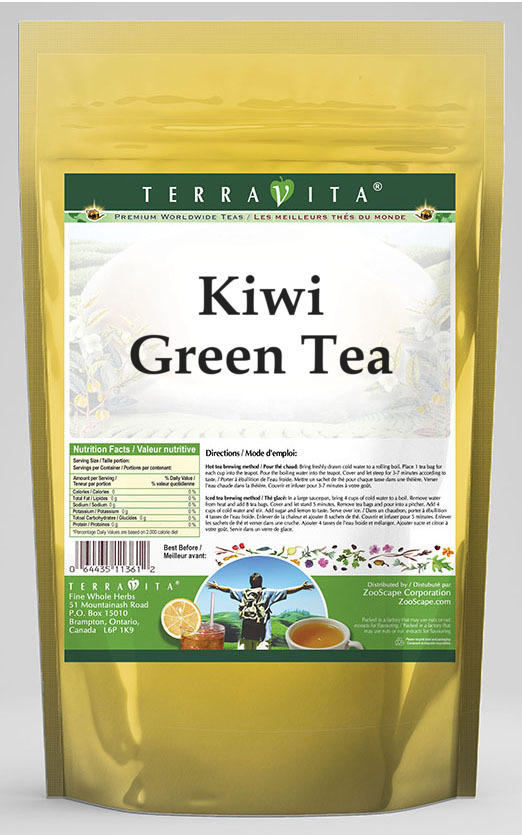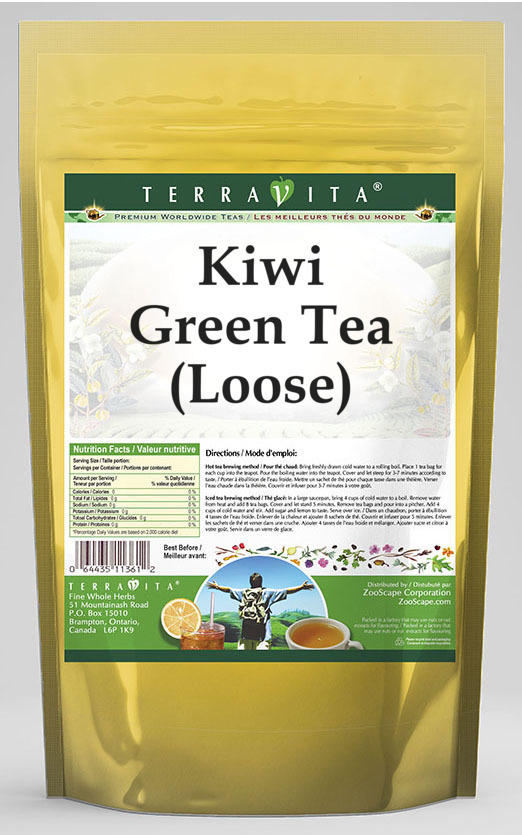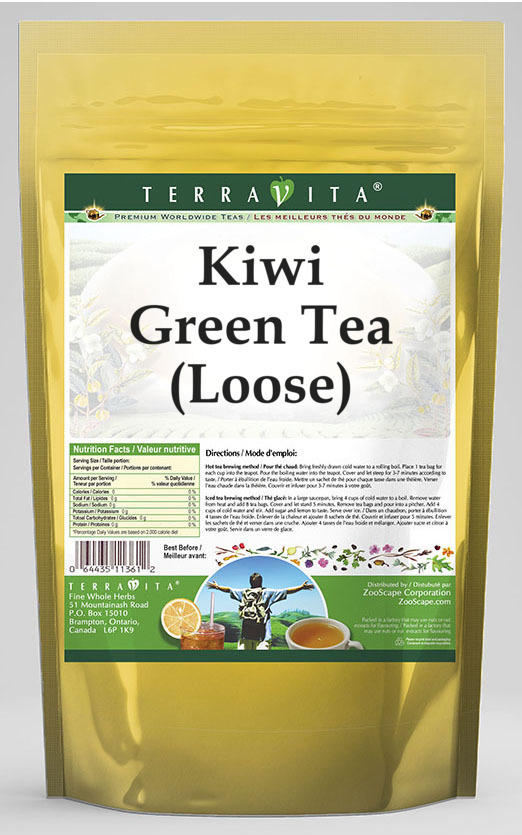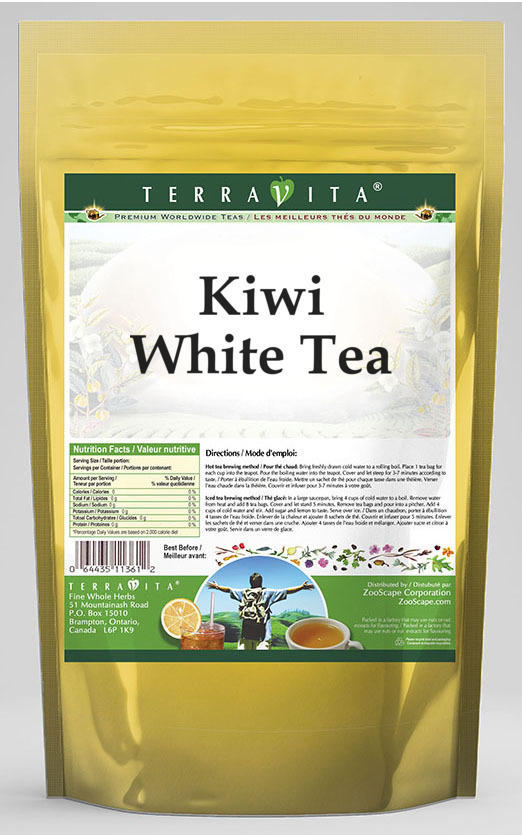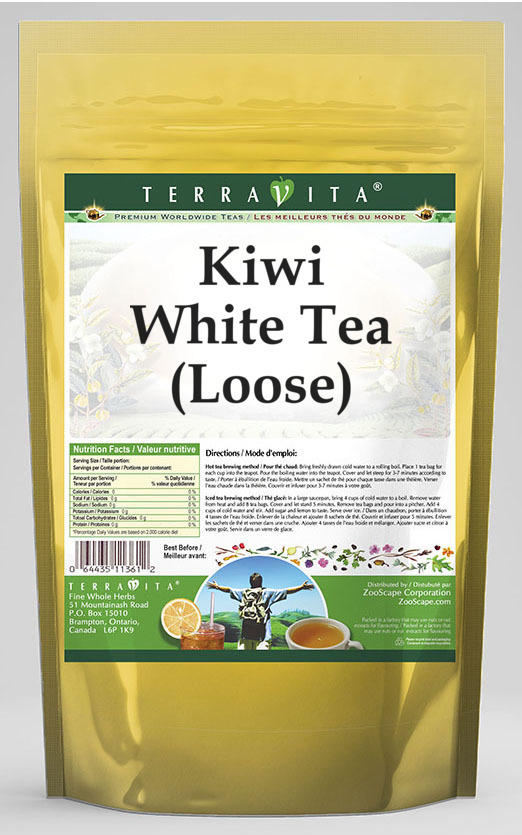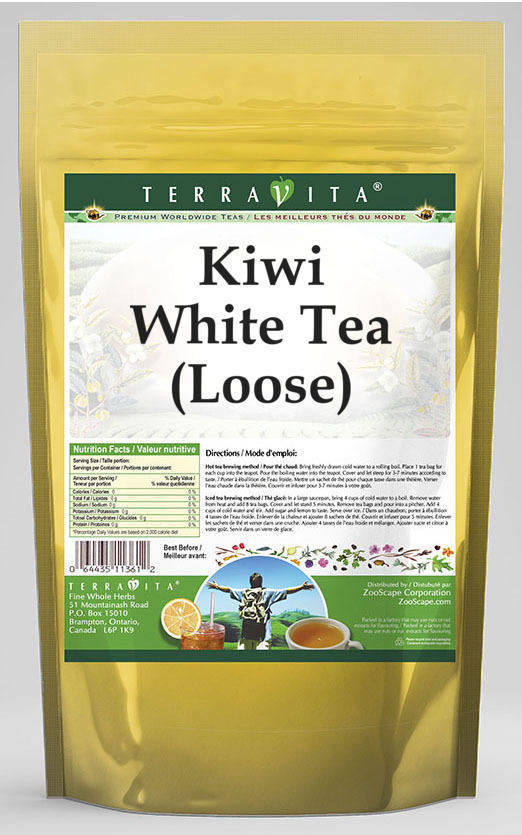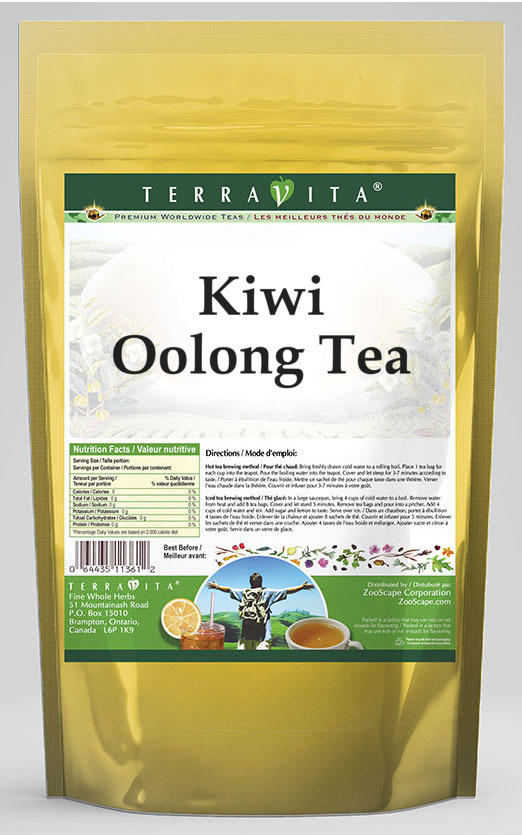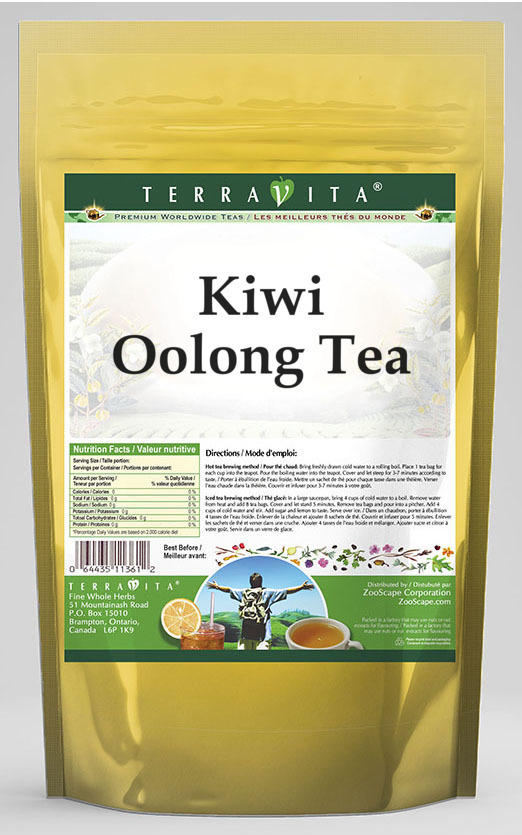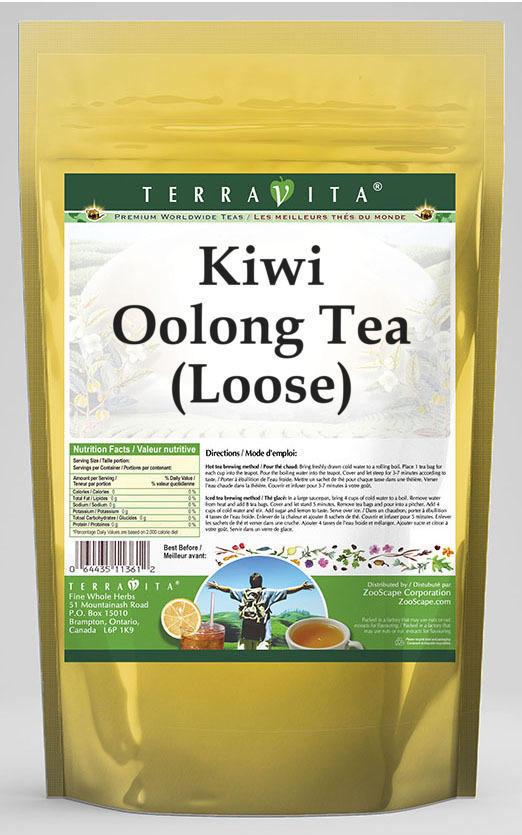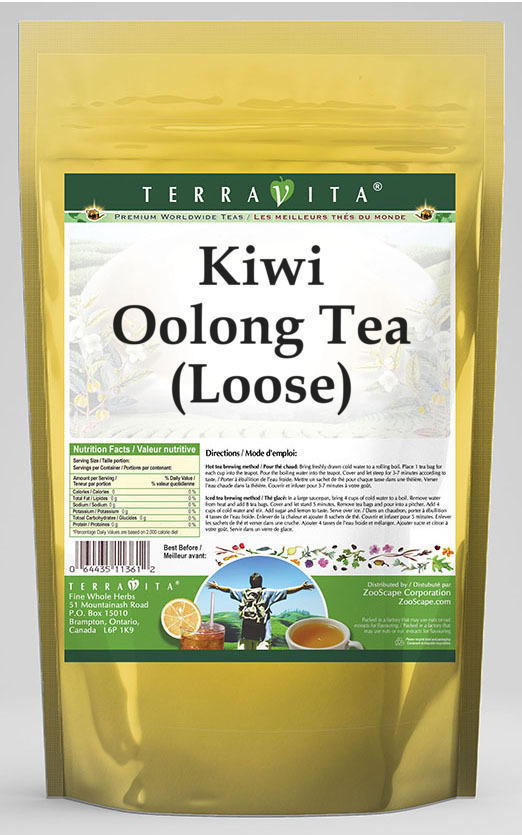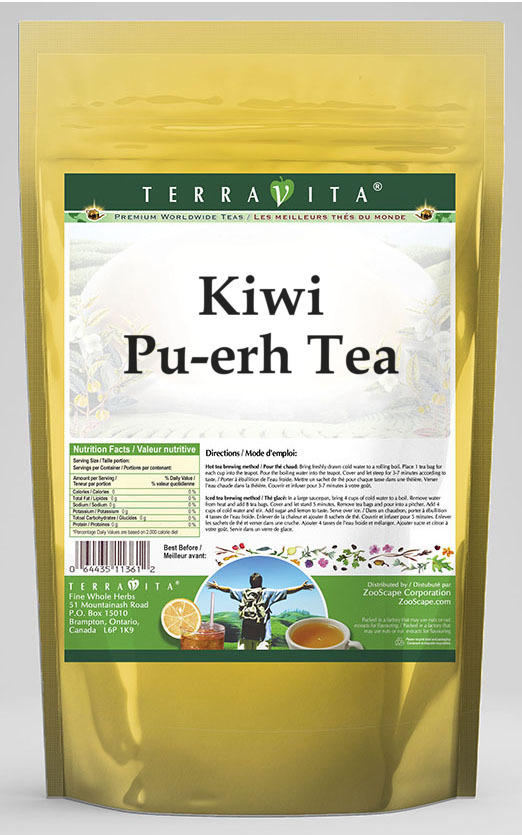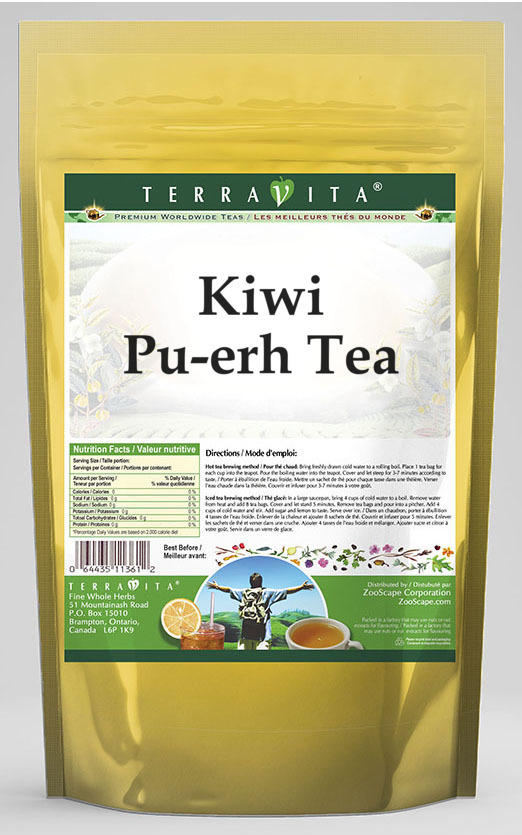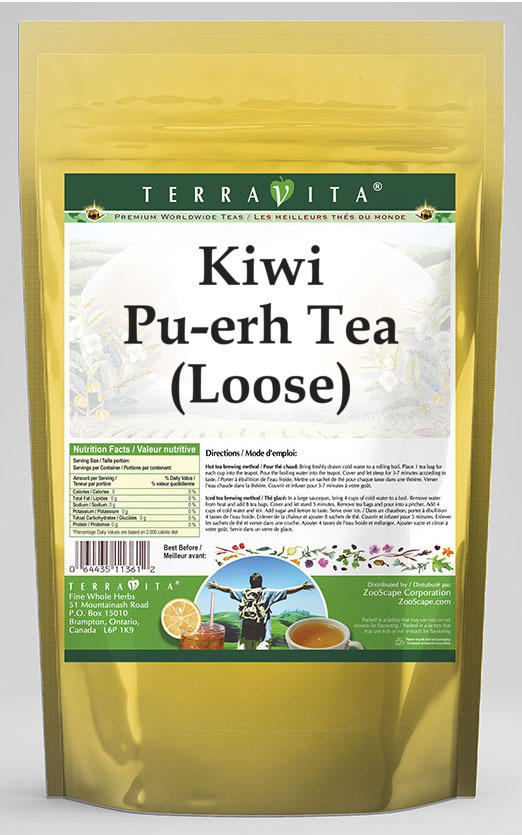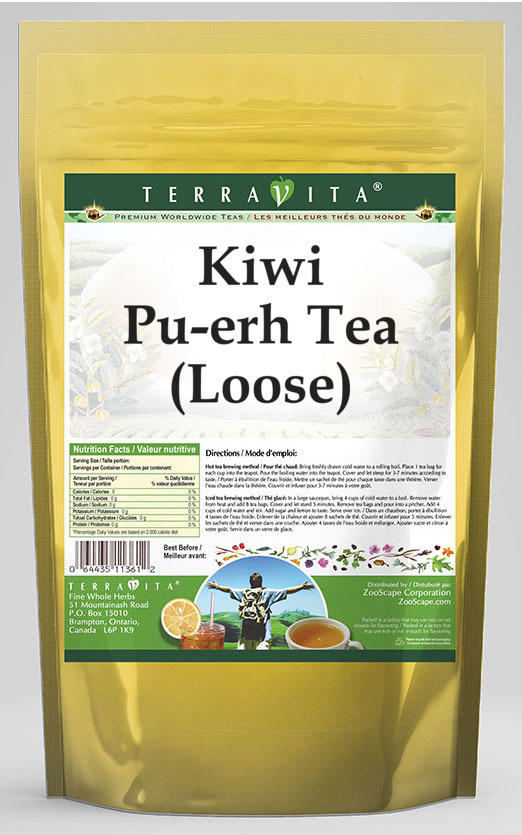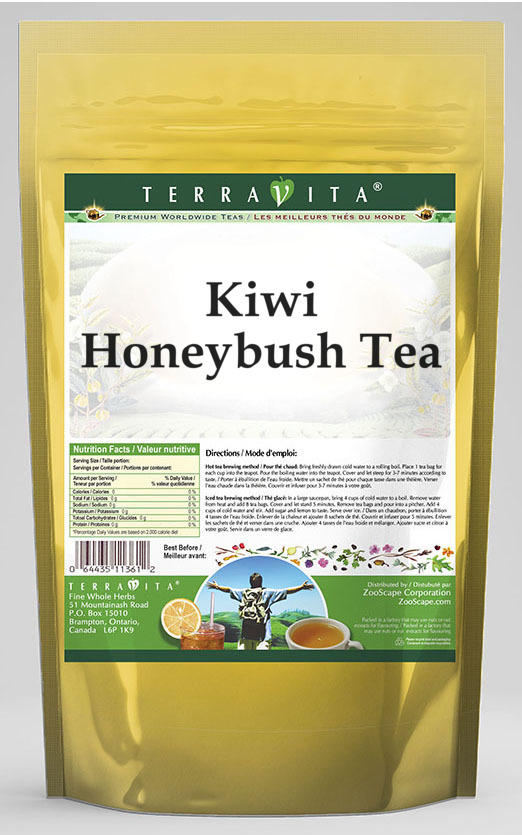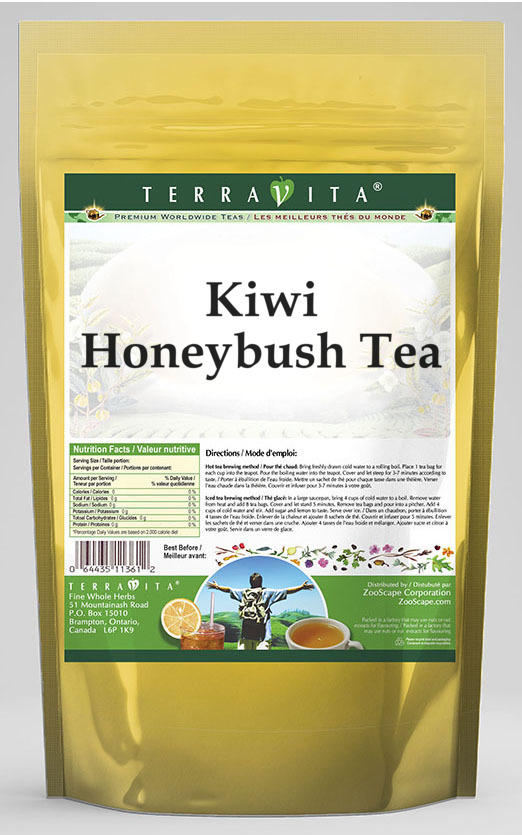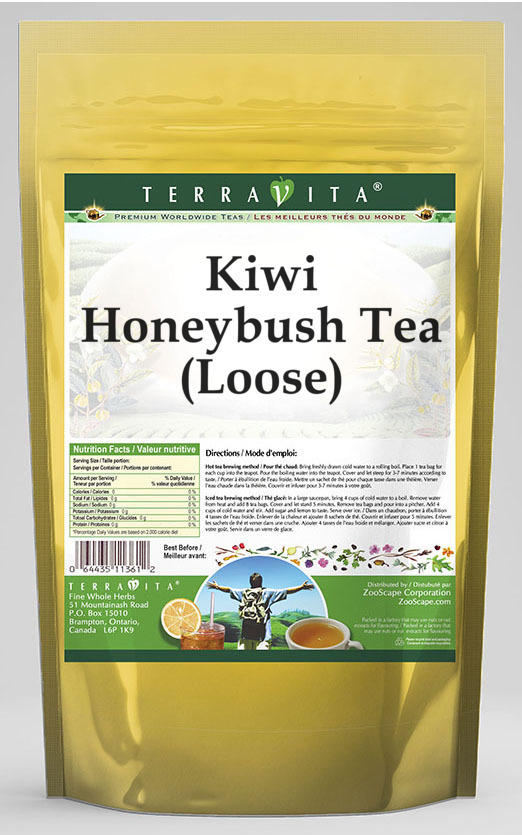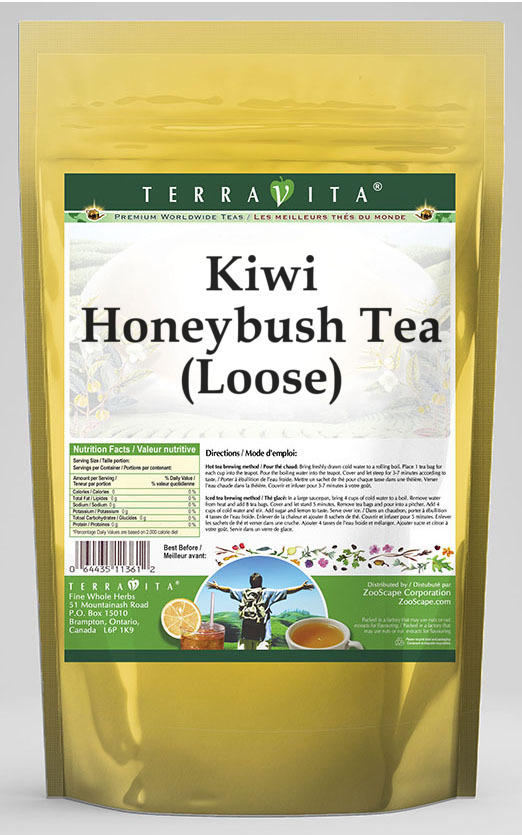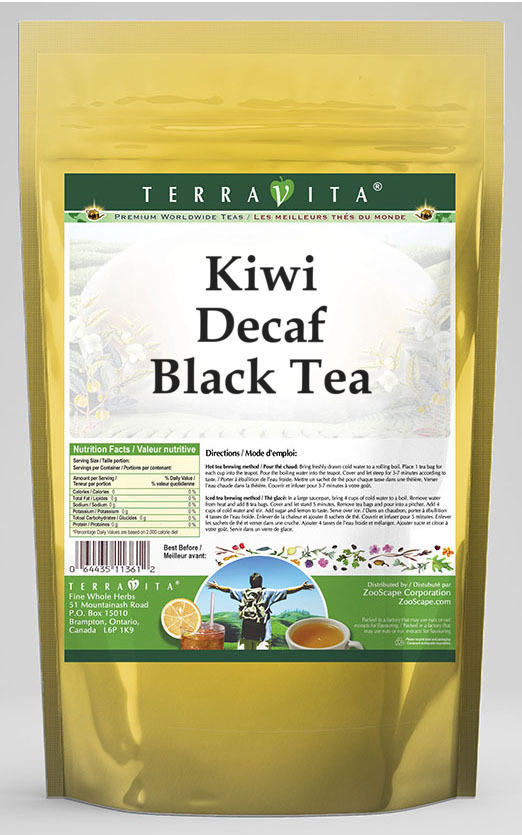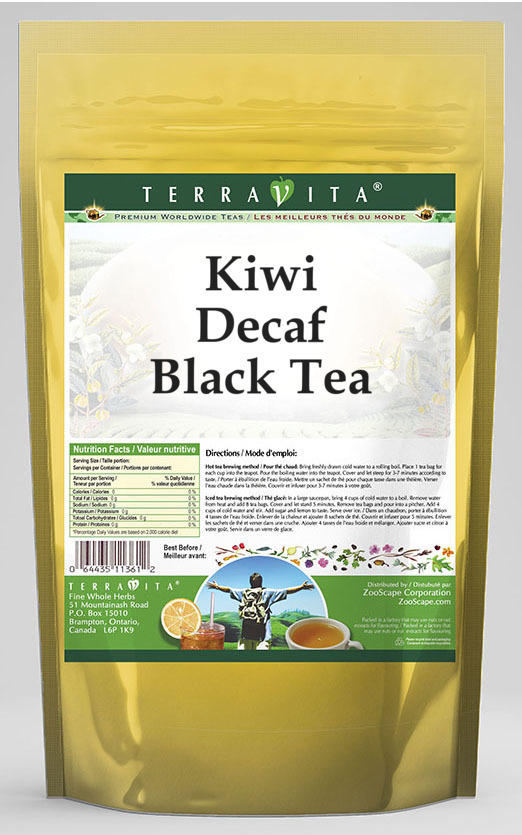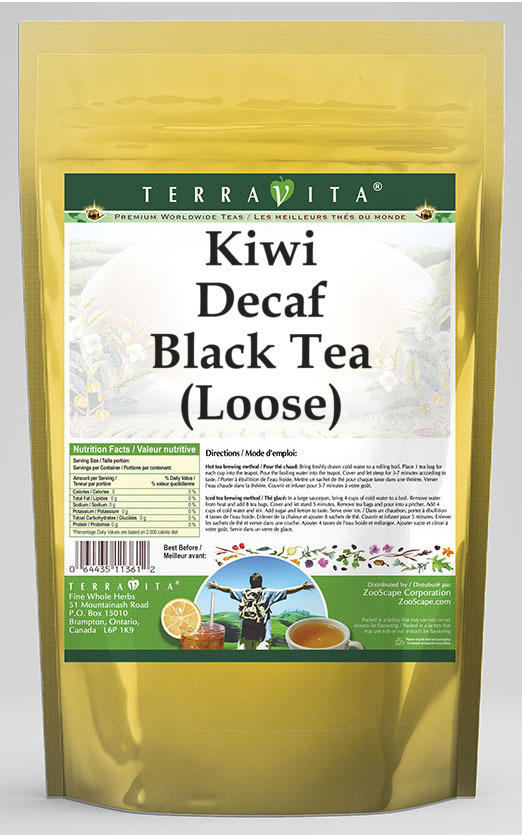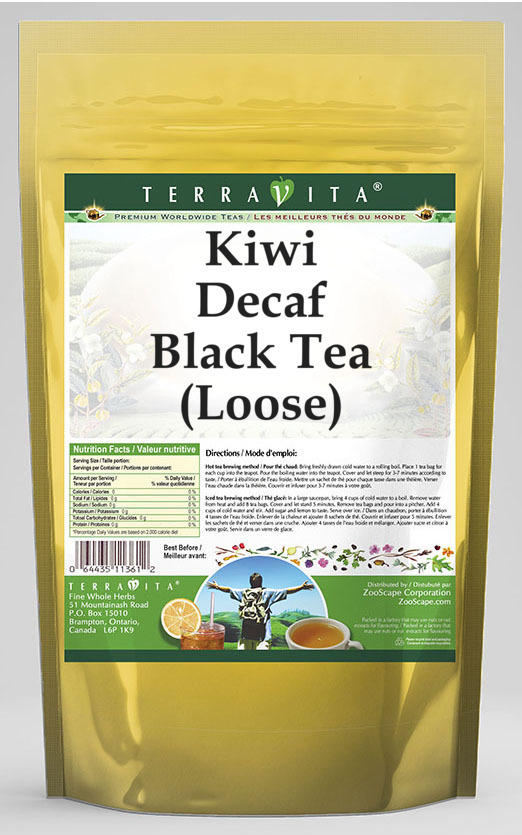Kiwi Chamomile Tea
| Images | Product Name | Size | ZIN | Price | Quantity | Add to Cart |
| Kiwi Chamomile Tea | 25 tea bags | 532822 | $18.55 | |||
| 50 tea bags | 532823 | $30.98 | ||||
| Kiwi Chamomile Tea (Loose) | 4 oz | 532824 | $18.13 | |||
| 8 oz | 532825 | $29.36 |
Ingredients: Chamomile tea, Kiwi Pieces, Orange Peel, Hibiscus Flower and Natural Kiwi Flavor.
TerraVita strives to make all of our products affordable and reliable and are constantly searching the market to maintain our affordability and to look for new ways to serve you and the ones you love. TerraVita has become a trusted household name for many families and can bring you and yours the very best herbal supplements, blends, teas and spices that are on the market today.
TerraVita is packed in tamper-proof, food-grade, recyclable containers.
ZooScape is proud to be the exclusive distributor of TerraVita teas, herbs and supplements in the United States, Canada and around the world. Please direct all wholesale and bulk inquiries to 1-844-449-0444.
These statements have not been evaluated by the Food and Drug Administration (FDA). Products are intended to support general well being and are not intended to treat, diagnose, prevent, or cure any condition or disease.
Kiwi Rooibos Tea
| Images | Product Name | Size | ZIN | Price | Quantity | Add to Cart |
| Kiwi Rooibos Tea | 25 tea bags | 532826 | $18.47 | |||
| 50 tea bags | 532827 | $30.83 | ||||
| Kiwi Rooibos Tea (Loose) | 4 oz | 532828 | $17.97 | |||
| 8 oz | 532829 | $29.13 |
TerraVita strives to make all of our products affordable and reliable and are constantly searching the market to maintain our affordability and to look for new ways to serve you and the ones you love. TerraVita has become a trusted household name for many families and can bring you and yours the very best herbal supplements, blends, teas and spices that are on the market today.
TerraVita is packed in tamper-proof, food-grade, recyclable containers.
ZooScape is proud to be the exclusive distributor of TerraVita teas, herbs and supplements in the United States, Canada and around the world. Please direct all wholesale and bulk inquiries to 1-844-449-0444.
These statements have not been evaluated by the Food and Drug Administration (FDA). Products are intended to support general well being and are not intended to treat, diagnose, prevent, or cure any condition or disease.
Kiwi Black Tea
| Images | Product Name | Size | ZIN | Price | Quantity | Add to Cart |
| Kiwi Black Tea | 25 tea bags | 427150 | $16.33 | |||
| 50 tea bags | 427151 | $26.96 | ||||
| Kiwi Black Tea (Loose) | 4 oz | 427146 | $15.02 | |||
| 8 oz | 427149 | $23.69 | ||||
| Kiwi Black Tea (Deluxe Blend) | 25 tea bags | 532830 | $16.77 | |||
| 50 tea bags | 532831 | $27.61 | ||||
| Kiwi Black Tea (Loose) (Deluxe Blend) | 4 oz | 532832 | $15.32 | |||
| 8 oz | 532833 | $24.29 |
• We only use natural flavors, giving a clean true taste with no chemical aftertaste
Ingredients: Black tea, Kiwi Pieces, Orange Peel, Hibiscus Flower and Natural Kiwi Flavor.
Firstly...we only use high grown teas from the top 3 tea growing regions of Sri Lanka - Nuwara Eliya, Dimbula and Uva. These three high-grown districts produce flavorful teas that have classic "Ceylon" tea character which is noted by floral bouquet and flavor notes, touches of mild astringency, bright coppery color and, most importantly - perfect for use as the base tea of our flavored teas. (We have tested teas from various other origins around the world as base stock for our flavored teas, but none of these teas made the grade. We may pay more for high grown Ceylons, but the taste is worth it).
Dimbula and the western estates of Nuwara Eliya have a major quality peak during Jan/Feb, whereas Uva and the eastern estates of Nuwara Eliya have their peak in July/Aug. This "dual peak period" allows us to buy the best for our flavored tea blends several times during the year, ensuring top quality and freshness.
Secondly...we use flavoring oils not crystals to give the tea drinker an olfactory holiday before indulging in the liquid tea delicacy.
Thirdly...we specify natural flavors. High quality tea tastes good and natural flavors do not mask the natural taste of the high grown Ceylon tea. (The norm for many making flavored tea is to use overpowering artificial flavors which can be used to hide lower quality tea). Natural flavors do not leave an aftertaste giving the tea a clean and true character. It should be noted that natural flavors tend to be somewhat "soft" and the flavors slightly muted, but for many this is a refreshing change and one of the desired attributes of our naturally flavored teas.
Now you can sit back and enjoy the fruits of our labor (or should we say flavor) knowing that we have formulated the best flavored teas that are available.
ZooScape is proud to be the exclusive distributor of TerraVita teas, herbs and supplements in the United States, Canada and around the world. Please direct all wholesale and bulk inquiries to 1-844-449-0444.
TerraVita is an exclusive line of premium-quality, natural source products that use only the finest, purest and most potent ingredients found around the world. TerraVita is hallmarked by the highest possible standards of purity, potency, stability and freshness. All of our products are prepared with the highest elements of quality control, from raw materials through the entire manufacturing process, up to and including the moment that the bottles or bags are sealed for freshness and shipped out to you. Our highest possible standards are certified by independent laboratories and backed by our personal guarantee.
TerraVita strives to make all of our products affordable and reliable and are constantly searching the market to maintain our affordability and to look for new ways to serve you and the ones you love. TerraVita has become a trusted household name for many families and can bring you and yours the very best herbal supplements, blends, teas and spices that are on the market today.
TerraVita is packed in tamper-proof, food-grade, recyclable containers.
ZooScape is proud to be the exclusive distributor of TerraVita teas, herbs and supplements in the United States, Canada and around the world. Please direct all wholesale and bulk inquiries to 1-844-449-0444.
These statements have not been evaluated by the Food and Drug Administration (FDA). Products are intended to support general well being and are not intended to treat, diagnose, prevent, or cure any condition or disease.
Kiwi Green Tea
| Images | Product Name | Size | ZIN | Price | Quantity | Add to Cart |
| Kiwi Green Tea | 25 tea bags | 532834 | $12.90 | |||
| 50 tea bags | 532835 | $20.27 | ||||
| Kiwi Green Tea (Loose) | 4 oz | 532836 | $9.19 | |||
| 8 oz | 532837 | $13.26 |
Ingredients: Green tea, Kiwi Pieces, Orange Peel, Hibiscus Flower and Natural Kiwi Flavor.
TerraVita strives to make all of our products affordable and reliable and are constantly searching the market to maintain our affordability and to look for new ways to serve you and the ones you love. TerraVita has become a trusted household name for many families and can bring you and yours the very best herbal supplements, blends, teas and spices that are on the market today.
TerraVita is packed in tamper-proof, food-grade, recyclable containers.
ZooScape is proud to be the exclusive distributor of TerraVita teas, herbs and supplements in the United States, Canada and around the world. Please direct all wholesale and bulk inquiries to 1-844-449-0444.
These statements have not been evaluated by the Food and Drug Administration (FDA). Products are intended to support general well being and are not intended to treat, diagnose, prevent, or cure any condition or disease.
Kiwi White Tea
| Images | Product Name | Size | ZIN | Price | Quantity | Add to Cart |
| Kiwi White Tea | 25 tea bags | 532838 | $26.09 | |||
| 50 tea bags | 532839 | $45.27 | ||||
| Kiwi White Tea (Loose) | 4 oz | 532840 | $30.01 | |||
| 8 oz | 532841 | $50.76 |
Ingredients: White tea, Kiwi Pieces, Orange Peel, Hibiscus Flower and Natural Kiwi Flavor.
TerraVita strives to make all of our products affordable and reliable and are constantly searching the market to maintain our affordability and to look for new ways to serve you and the ones you love. TerraVita has become a trusted household name for many families and can bring you and yours the very best herbal supplements, blends, teas and spices that are on the market today.
TerraVita is packed in tamper-proof, food-grade, recyclable containers.
ZooScape is proud to be the exclusive distributor of TerraVita teas, herbs and supplements in the United States, Canada and around the world. Please direct all wholesale and bulk inquiries to 1-844-449-0444.
These statements have not been evaluated by the Food and Drug Administration (FDA). Products are intended to support general well being and are not intended to treat, diagnose, prevent, or cure any condition or disease.
Kiwi Oolong Tea
| Images | Product Name | Size | ZIN | Price | Quantity | Add to Cart |
| Kiwi Oolong Tea | 25 tea bags | 532842 | $12.80 | |||
| 50 tea bags | 532843 | $20.08 | ||||
| Kiwi Oolong Tea (Loose) | 4 oz | 532844 | $9.04 | |||
| 8 oz | 532845 | $13.00 |
TerraVita strives to make all of our products affordable and reliable and are constantly searching the market to maintain our affordability and to look for new ways to serve you and the ones you love. TerraVita has become a trusted household name for many families and can bring you and yours the very best herbal supplements, blends, teas and spices that are on the market today.
TerraVita is packed in tamper-proof, food-grade, recyclable containers.
ZooScape is proud to be the exclusive distributor of TerraVita teas, herbs and supplements in the United States, Canada and around the world. Please direct all wholesale and bulk inquiries to 1-844-449-0444.
These statements have not been evaluated by the Food and Drug Administration (FDA). Products are intended to support general well being and are not intended to treat, diagnose, prevent, or cure any condition or disease.
Kiwi Pu-erh Tea
| Images | Product Name | Size | ZIN | Price | Quantity | Add to Cart |
| Kiwi Pu-erh Tea | 25 tea bags | 532846 | $13.11 | |||
| 50 tea bags | 532847 | $20.68 | ||||
| Kiwi Pu-erh Tea (Loose) | 4 oz | 532848 | $9.53 | |||
| 8 oz | 532849 | $13.88 |
TerraVita strives to make all of our products affordable and reliable and are constantly searching the market to maintain our affordability and to look for new ways to serve you and the ones you love. TerraVita has become a trusted household name for many families and can bring you and yours the very best herbal supplements, blends, teas and spices that are on the market today.
TerraVita is packed in tamper-proof, food-grade, recyclable containers.
ZooScape is proud to be the exclusive distributor of TerraVita teas, herbs and supplements in the United States, Canada and around the world. Please direct all wholesale and bulk inquiries to 1-844-449-0444.
These statements have not been evaluated by the Food and Drug Administration (FDA). Products are intended to support general well being and are not intended to treat, diagnose, prevent, or cure any condition or disease.
Kiwi Honeybush Tea
| Images | Product Name | Size | ZIN | Price | Quantity | Add to Cart |
| Kiwi Honeybush Tea | 25 tea bags | 532850 | $19.29 | |||
| 50 tea bags | 532851 | $32.37 | ||||
| Kiwi Honeybush Tea (Loose) | 4 oz | 532852 | $19.27 | |||
| 8 oz | 532853 | $31.42 |
TerraVita strives to make all of our products affordable and reliable and are constantly searching the market to maintain our affordability and to look for new ways to serve you and the ones you love. TerraVita has become a trusted household name for many families and can bring you and yours the very best herbal supplements, blends, teas and spices that are on the market today.
TerraVita is packed in tamper-proof, food-grade, recyclable containers.
ZooScape is proud to be the exclusive distributor of TerraVita teas, herbs and supplements in the United States, Canada and around the world. Please direct all wholesale and bulk inquiries to 1-844-449-0444.
These statements have not been evaluated by the Food and Drug Administration (FDA). Products are intended to support general well being and are not intended to treat, diagnose, prevent, or cure any condition or disease.
Kiwi Decaf Black Tea
| Images | Product Name | Size | ZIN | Price | Quantity | Add to Cart |
| Kiwi Decaf Black Tea | 25 tea bags | 532854 | $24.42 | |||
| 50 tea bags | 532855 | $42.11 | ||||
| Kiwi Decaf Black Tea (Loose) | 4 oz | 532856 | $27.40 | |||
| 8 oz | 532857 | $46.04 |
Ingredients: Decaf Black tea, Kiwi Pieces, Orange Peel, Hibiscus Flower and Natural Kiwi Flavor.
TerraVita strives to make all of our products affordable and reliable and are constantly searching the market to maintain our affordability and to look for new ways to serve you and the ones you love. TerraVita has become a trusted household name for many families and can bring you and yours the very best herbal supplements, blends, teas and spices that are on the market today.
TerraVita is packed in tamper-proof, food-grade, recyclable containers.
ZooScape is proud to be the exclusive distributor of TerraVita teas, herbs and supplements in the United States, Canada and around the world. Please direct all wholesale and bulk inquiries to 1-844-449-0444.
These statements have not been evaluated by the Food and Drug Administration (FDA). Products are intended to support general well being and are not intended to treat, diagnose, prevent, or cure any condition or disease.
